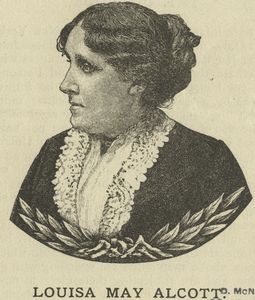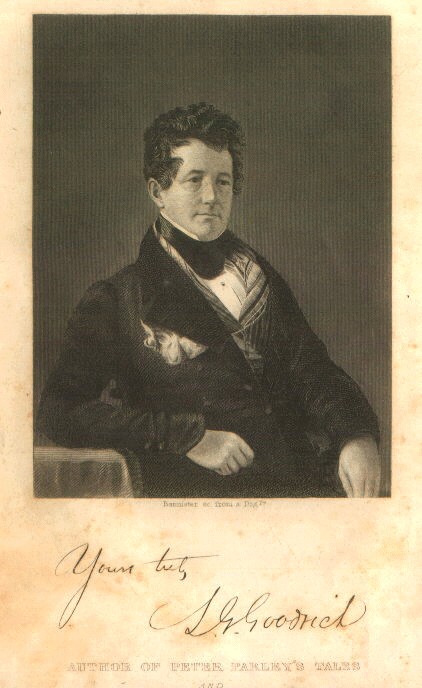Author Biographies
By the Editors
Known author BIOGRAPHIES, with Contributing EDITORS‘ initials

A
Æsop (6th Century BCE). It is unclear whether Æsop was an actual personage. Herodotus and Plutarch place him as a slave and advisor to Croesus, King of Lydia. His place of birth is unclear, some sources say he was from Thrace, while others say he was from Phrygia, in modern-day Turkey. An Egyptian biography places him on the island of Samos as a freed slave, who went to Babylon and served under King Lycurgus, meeting his death at Delphi. [IM]
Alcott, Louisa May (1832-1888). Louisa May Alcott is an American writer most known for her novel Little Women, which was published in 1868. Alcott was exposed at a young age to a number of influential thinkers such as Emerson, Hawthorne, and Thoreau. Aside from her writing, Alcott was also known for her work with both the abolitionist and feminist movements. Alcott died of a stroke in 1888. [MSK]
Anderson, Hellen Rebecca (Cherokee; c.1893-c.1994). Information surrounding Anderson is sparse and sometimes conflicting. She appears in the 1900 U.S. Census records as the daughter of John Anderson, age 37, and Maybel [sic] S. Anderson, also age 37; the Census lists her birthplace as Indian Territory. Her biographical sketch accompanying her Twin Territories poem describes her as the daughter of regular contributor Mabel Washbourne Anderson. Ten years later, the Census lists her as age 16, living with her parents in Mayes, Oklahoma; her mother’s name is corrected. She also appears in the Eastern Cherokee Enrollment Records, 1908-1910. In 1920, now listed as Helen Taylor, age 25, she is still living with her parents in Mayes, but accompanied by her husband, Victor E. Taylor, having married him on September 5, 1917. By 1930, the couple were living in Dallas, and in 1940 in Tulsa. They appear to have had no children. At some point Hellen and Victor moved to his native Illinois, where he died in October 1942, and she purportedly died around 1994. Further research will be required to locate any additional writing Hellen may have published. [KK]
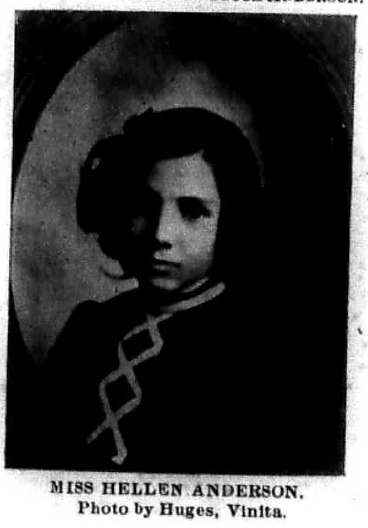
of Twin Territories. Public domain.
Austin, Mary Hunter (1868-1934). Mary Austin was an American essayist, novelist, and poet recognized for her naturalist fiction about the American Southwest. Her classic collection of lyrical essays The Land of Little Rains (1903) focuses on the landscape and inhabitants of the Southwest. Austin also wrote about and advocated for Native American rights. It is debatable if her use of indigenous language and dress was a form of cultural appropriation in the way we now tend to think about such transcultural practices. In 1933, a year before her death, she bequeathed most of her state to the Indian Arts Fund, whose entire holdings are now housed within the Indian Arts Research Center located in Santa Fe, NM. [RM]
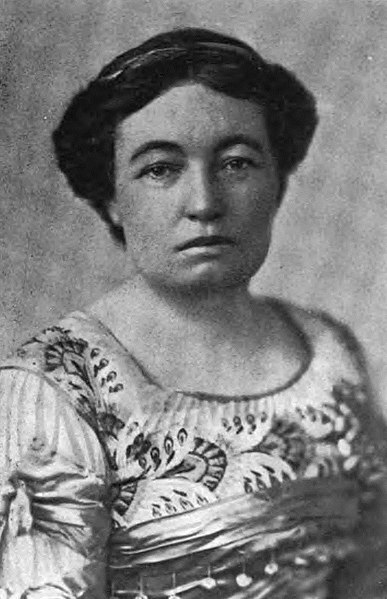
Avary, Myrta Lockett (1857-1946). Avary was a journalist, novelist, and editor who had a particular interest in the Reconstruction-era South and Confederate history. After the death of her only child,, Avary and her husband separated, and she moved to New York City from Atlanta to invest herself fully in journalistic and humanitarian work. Among other things, Avary was an active member of the Salvation Army, the Woman’s War Relief Association, and the National Congress of Mothers. Her most notable books include Dixie After the War, The Recollections of Alexander H. Stephens, and Uncle Remus and the Wren’s Nest. [KTB]
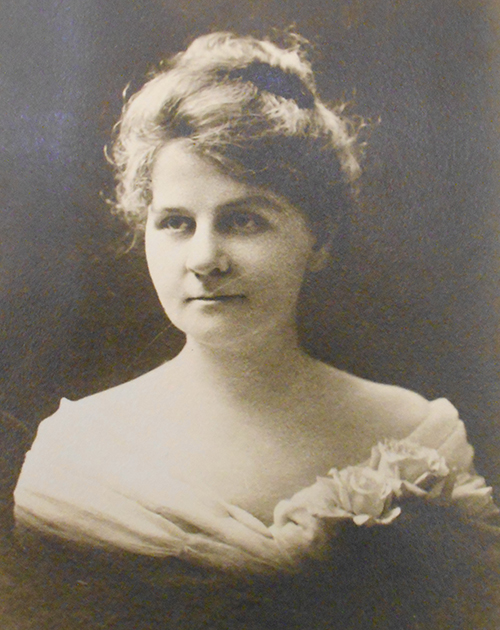
B
Bagley, Julian Elihu (1892-1981). Julian Elihu Bagley was an author, World War I veteran, and hotel concierge. He had an agriculture degree from Hampton Institute but spent most of his career at the War Memorial Opera House in San Francisco. Bagley contributed writing to W.E.B. DuBois for The Crisis and The Brownies’ Book. In 1971 he published his book of folklore based on African animal stories, Candle-lighting Time in Bodilalee. [JKB]
Bell, Mattie (?). Not much is known about Mattie Bell, except that 20 of her poems were published in the Robert Merry’s Museum magazine between 1858 and 1863. [MSK]
Bellows, Isabel Frances (ca. 1883~1906). Although little is known about her, and she is often confused with her contemporary Isabel Francis Bellows, this prolific poet regularly published her work in the popular St. Nicholas: An Illustrated Magazine for Young Folks. Bellows was particularly fond of limericks, which she would often write as standalone pieces or in groups. Occasionally, Bellows published essays in which she argued on behalf of particular educational practices, such as her “The Educational Value of the History of France.” Such writings, in addition to her poetry for children, suggests she may have been a school teacher. [KTB]
Bourne, Vincent (1695–1747). An English classical scholar who studied at Westminster school and Trinity College, Cambridge. He published three editions of his Latin poems (mostly translations of other English poems). See his work, The Poetical Works, Latin and English, of Vincent Bourne here. [AA]
Braithwaite, William Stanley (1878-1962). Although born in a comfortable home in Boston, Massachusetts, Braithwaite’s economic situation deteriorated after his father’s death. At 13 years old, he quit school to help support his family. He eventually became a poet, critic, editor, anthologist, and teacher. As a critic, he foregrounded the work of Black poets like Paul Laurence Dunbar, James Weldon Johnson, Georgia Douglas Johnson, and Countee Cullen, all of which feature in The Envious Lobster. In addition to the numerous anthologies he edited, Braithwaite authored three poetry collections: Lyrics of Life and Love (1904), House of Falling Leaves (1908), and Selected Poems (1948). He also wrote the 1919 children’s book The Story of the Great War, about World War I. Braithwaite died in Harlem in 1962, to where he moved in 1945 after teaching creative writing for 10 years at Atlanta University. [RM]
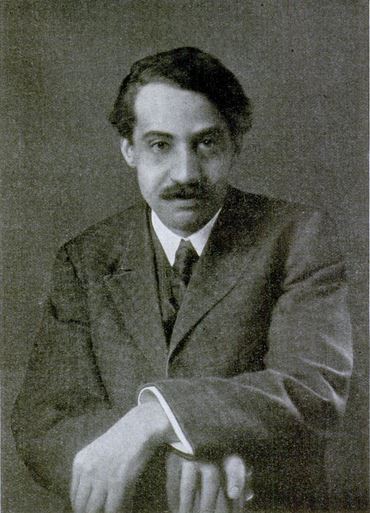
Bryan, Ella Howard (1872-1973). Ella Howard Bryan was initially a governess before she found success as a writer. Writing under the pen name Clinton Dangerfield, Bryan published an impressive collection of short stories and verse; however, the name Clinton Dangerfield is best remembered today as the author of western pulp fiction. [KTB]
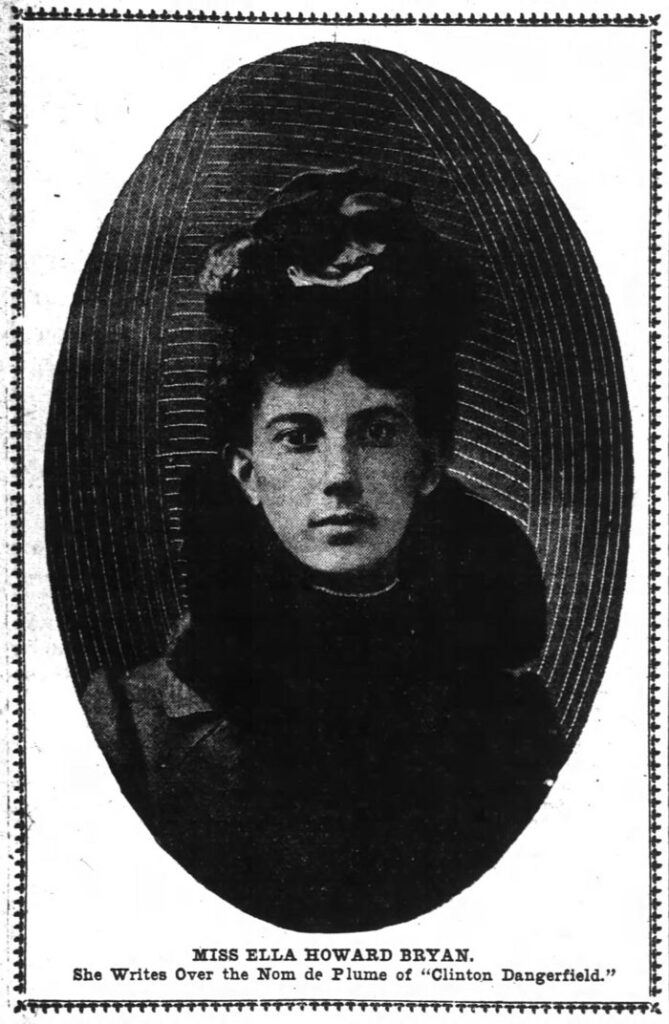
Bryant, William Cullen (1794-1878). Born in the small Massachusetts village of Cummington, whose 2010 U.S. population was still only 872 residents, Bryant was one of America’s most famous poets. He gained fame as a young person, publishing verse in his local paper at age thirteen; by 1821 he had published a poetry volume. Often reprinted, his work remained enormously popular until his death. But poetry did not pay, and Bryant earned his living as the distinguished newspaper of the New York Evening Post. Although during his lifetime he published much less poetry than near-contemporaries like Henry Wadsworth Longfellow, John Greenleaf Whittier, James Russell Lowell, and Oliver Wendell Holmes Sr., he was celebrated as one of the Schoolroom Poets or Fireside Poets, so named for their ubiquity in American households. Some of his poems have never been out of print.
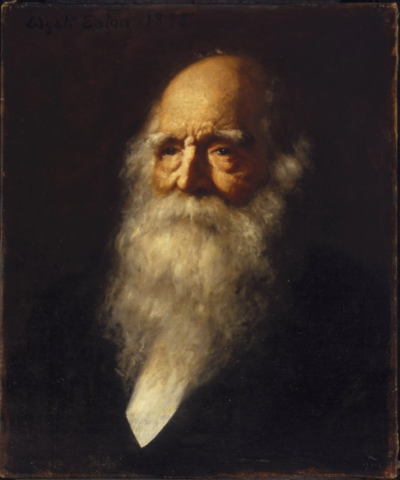
C
Carleton, Will (1845-1912). Born and raised in rural Michigan, Will Carleton is most famously remembered for his numerous writings depicting farm life. In the late 1870s, Carleton moved to the city (first Chicago, and later Brooklyn) where he founded the journal Everywhere. [MSK]
Carter, Stella Le Flore (Cherokee-Chickasaw, c.1893-?). U.S. Census records list Carter’s name variously as Stella L. Carter, Stelle L. Carter, or Stelle La Flore Carter; her estimated birth date as 1892, 1893, or 1894; and her birthplace as “Chickasaw Nation, Indian Territory.” In 1900, her 57-year-old grandmother Serena Carter was the head of household, which included Serena’s 32-year-old son (and Stella’s father), Charles David Carter (1868-1929); 28-year-old Texas-born daughter-in-law (Stella’s mother), Gertrude Wilson Carter (1872-1901), whom Charles married in 1891; two sisters (Italy and Julia) and a younger brother (Benjamin); Serena’s 19-year-old adopted son Samuel Frye and 13-year-old adopted daughter Sophia Frye; and a 20-year-old white servant, Roland Barker. The busy household might have helped the young children survive their mother’s early death. By 1910, the widowed Charles’s household also included a 36-year-old aunt, Annie G. Adington, and married Black servants, Felix and Cynthia Jerry (ages 57 and 52). Stella continued living with her father, who married Cecile Jones in 1911. The Census after that date lists a Stella Carter born in 1897 (possibly a different individual), who married Carl Daughty in Adair, Oklahoma. No death record for Stella Le Flore Carter is currently available.
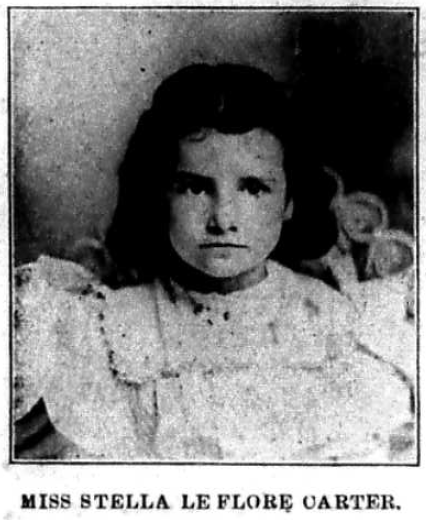
Public domain.
Several notable records include Stella’s membership on the Chickasaw by Blood Roll and an allotment of lands to Stella worth $1040, a substantial sum at that time. Of Cherokee-Chickasaw descent, Charles Carter was a prominent leader in the Chickasaw Nation, serving in various important official capacities. When Oklahoma gained statehood, he was elected to the U.S. Congress as a Democrat and served in the Sixtieth and in nine succeeding Congresses (1907-1927). The Quarterly Journal of the Society of American Indians lists him as a vice-president of the society (SAI) in September 1915. A Miss Stella Carter is listed among the attendees at the 1914 SAI conference in Madison, Wisconsin. Coming from an accomplished and well-known family able to afford servants, Stella was likely very well educated. She does not appear to have published any other writing, although additional research may uncover new materials. [KK]
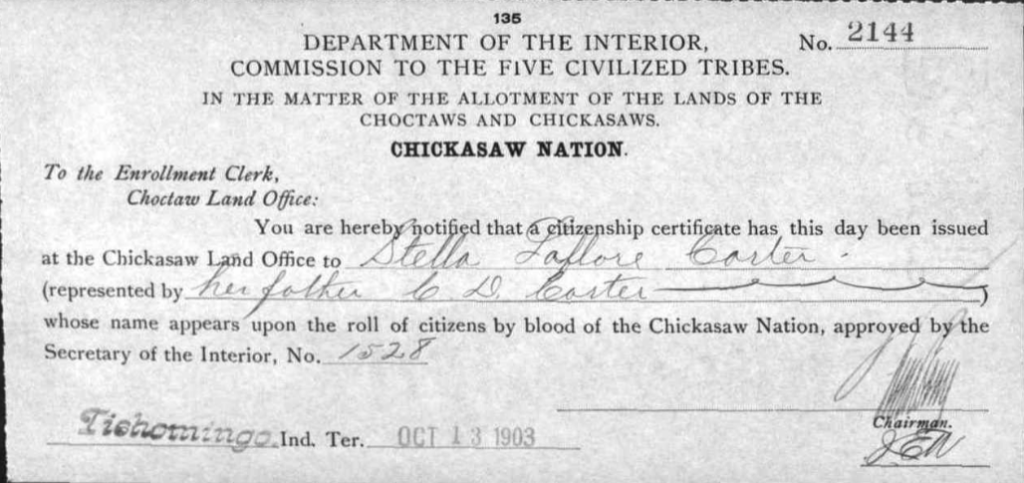
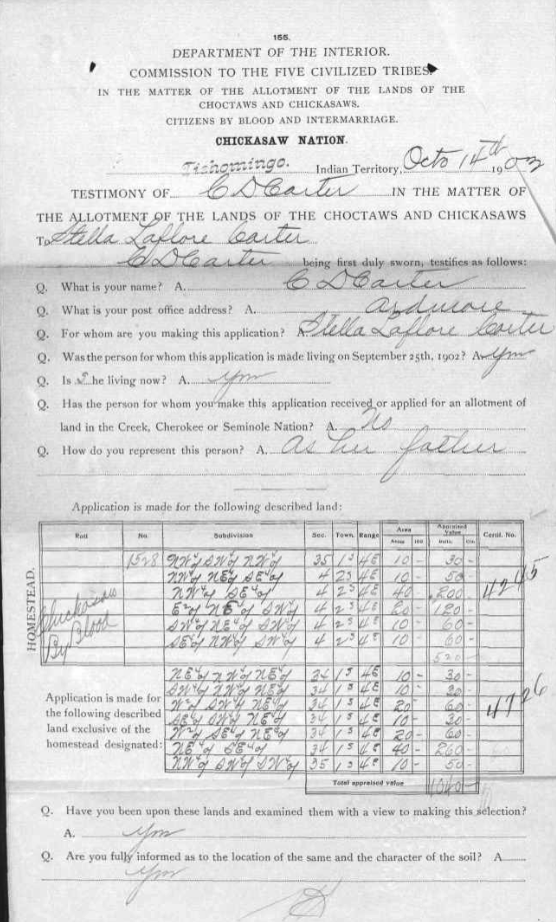
Cawein, Madison (1865 – 1914). A poet from Louisville, KY, Cawain’s similarity to Keat’s poetic style earned him the nickname of the “Keats of Kentucky.” In addition, one of Cawain’s poems, “Waste Land” (1913), is thought to have influenced T.S. Eliot’s The Waste Land (1922). Cawain experienced success in his lifetime and was able to make a living by publishing his poems in various magazines. [MSK]
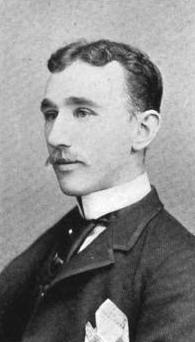
Chapman, Maria Weston (1806 -1885). A foremost abolitionist of her time, Chapman organized anti-slavery fairs throughout New England. She worked closely with William Lloyd Garrison, and published a pamphlet in 1839 called Right and Wrong in Massachusetts. Recognizing the intersection of two causes that mattered to her, she argued in her publication that the deep divisions among abolitionists grew from their disagreements over women’s rights. [CH]
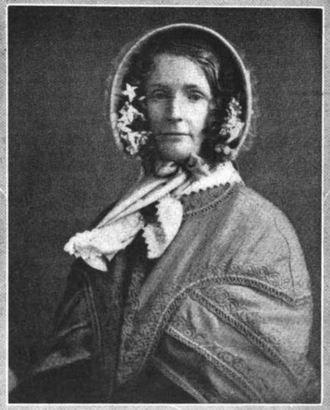
Cherokee Female Seminary (1851-1909) was located in Tahlequah, Oklahoma. Students of the seminary contributed many writings that comprised the institutions’ (technically there were two buildings in separate sites) publications, including A Wreath of Cherokee Rose Buds. Students were only identified by their first names in these publications, such as Ga-Yu-Ga and Quale-U-Quah, whose work is featured in this anthology.
Child, Lydia Maria (1802 – 1880). Lydia Maria Child was an influential activist, writer, and journalist from Massachusetts. One of the most renowned female authors of her time, Child wrote extensively in her lifetime, and is most known for her poem “Over the River and Through the Wood.” In addition to her creative works, she also wrote non-fiction activist pieces and was an active abolitionist and ally for both women’s and Native American rights. [MSK]
Church, Alfred J. (1829-1912). Alfred Church is best known for his English translations of classical texts, including selections from the works of Virgil, Homer, and Sophocles. He also wrote many Latin and English verses, was ordained as a priest, and taught at Merchant Taylors’ school, and University College, London. [IM]
Cohn, Irving (1898–1961). Little is known about this British American songwriter and piano player Irving Cohn. He is best known for his part in writing “Yes! We Have No Bananas” with Frank Silver. He was born in London, England, and died in Fort Lee, New Jersey. [IM]
Coleman, William Hoyt (c. 1840 – 1937). Throughout his life, Coleman had a number of jobs, including farmer, military nurse, and journalist. As a young man, he contributed a number of pieces to Robert Merry’s Museum. From 1887 to 1907, Coleman was the editor of Albany Argus, and in 1908 he became the editor of The Country Gentleman. Coleman died of pulmonary edema in 1937. [MSK]
Cotter, Joseph Seamon, Sr. (1861-1949). Joseph Seamon Cotter Sr. was one of the first African-American playwrights to be published. He also wrote poems and fiction. The son of a former slave, he was born on a Kentucky farm and worked and starting working as a laborer when he was eight years old. Although he received no formal education until he was 22, he eventually became a writer, educator and community leader. He was a close friend of African American poet Paul Laurence Dunbar. [RM]
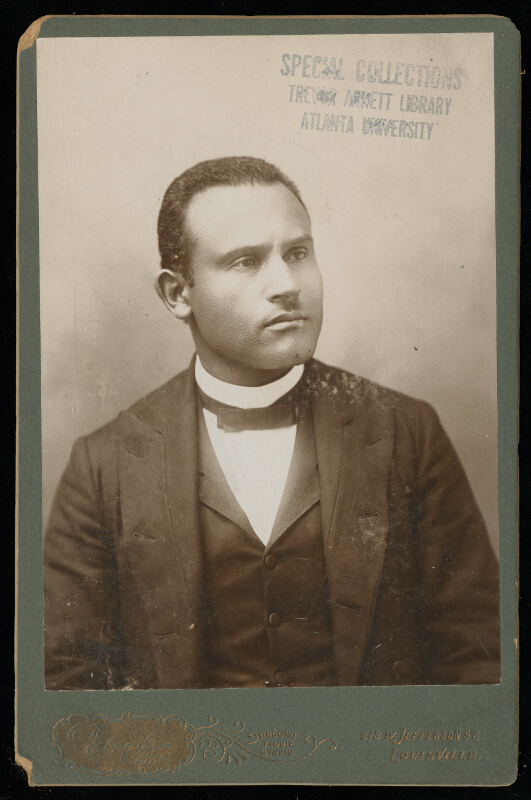
Crocheron, Augusta B. Joyce (1844-1915). Though born in Boston, Augusta Joyce Crocheron grew up in San Francisco before eventually settling in Salt Lake City as the plural wife of George W. Crocheron. She was an early Mormon pioneer, and today she is well-remembered for her book about the contributions of Mormon women, Representative Women of the Deseret. Crocheron saw her prose and poetry as an extension of her faith, and much of her work for both children and adults reflect on the beauty of nature and her relationship with God. [KTB]
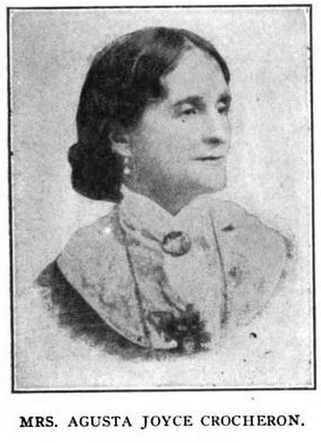
Curtis, A.W. Not much is known about Mrs. A. W. Curtis, who was a frequent contributor to The Advance (a Chicago Congregational church newspaper), The Youth’s Companion, and Christian Union. The North Carolina Raleigh News and Observer identifies a “Mrs. A. W. Curtis, wife of Rev. Dr. Curtis, who is pastor of the colored Congregational church in this city,” who “founded a cot in the Pickford Sanitarium at Southern Pines” in memory of her son, Ernest, who died “at the threshhold of manhood.” [JKB]
D
Dangerfield, Clinton (1872-1954). See Ella Howard Bryan. [KTB]
Diaz, Abby Morton (1821-1904). Abby Morton Diaz was raised by anti-slavery worker Ichabod Mortan and was an activist for most of her life, serving as the secretary of a juvenile anti-slavery society. Later in life, after her short-lived marriage, Diaz worked as a housekeeper and teacher to support her two young sons. Her experiences witnessing the harsh labor conditions of single working women during this time would later motivate her as a cofounder of the Women’s Educational and Industrial Union. Her writing career began after she successfully sold a story to Atlantic Monthly for a substantial sum. Afterward, she published frequently in Young Folks and was eventually asked to write a series about the household life of women later published in two volumes, The Bybury Book and Domestic Problems. [KTB}
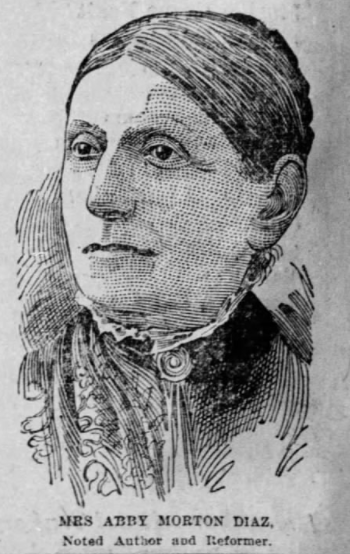
Dickinson, Emily (1830-1886). Emily Dickinson left behind hundreds of poems after her death without any instruction regarding publication. The few that were published during her lifetime were sent to publishers by friends without Dickinson’s review. Several surviving manuscripts show variations in word choice, so her intended final versions (if she intended one) is unknown. Editors often made significant changes in early published collections of her poetry. Dickinson physically secluded herself but socialized through her prolific letter writing. After her death, her sister, Lavinia, realized the importance of her poems and had them published, beginning her status as an important American poet. [JKB]
Dixon, Lottie Burrell. There is not much information available on Dixon. In addition to the poem “The Rainy Day,” included in The Crisis Magazine‘s children’s number of October, 1916, her short story “His Motto” appeared in the August 1914 number of the same magazine. “His Motto,” an inspirational tale of black inventive talent and industry, was later selected for the The Upward Path: A Reader for Colored Children, a 1920 anthology compiled by Myron T. Pritchard and Mary White Ovington. [RM]
Dodge, Mary Abigail (1833 – 1896). Mary Abigail Dodge was a writer known for her wit and support for women’s independence. Co-editor of the children’s magazine Our Young Folks along with Lucy Larcom and John T. Trowbridge, Dodge published in this magazine, and many others, under the pseudonym “Gail Hamilton.”[1] This name was created from a combination of her hometown (Hamilton, Massachusetts) and her middle name “Abigail.”[2] Along with poems and children’s stories, Dodge produced multiple collections of essays that promoted women’s right to education.[1] [KMB]
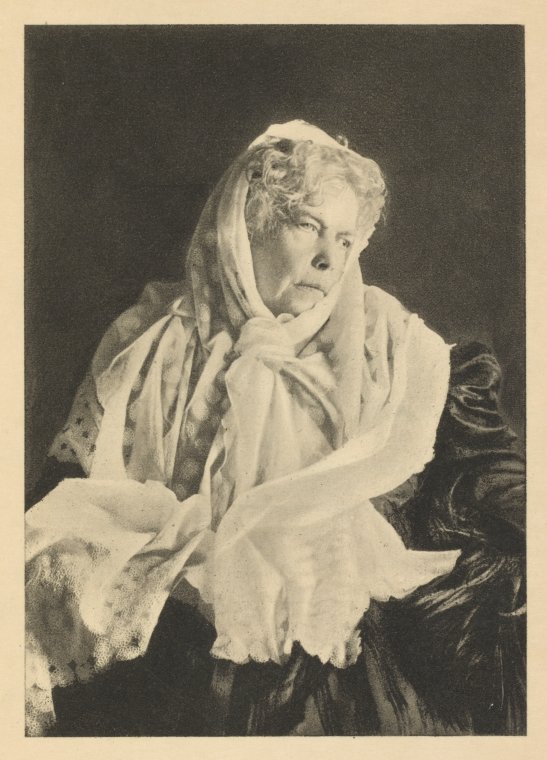
Dodge, Mary Mapes (1831-1905). Born in New York City, Mary Mapes Dodge belonged to an influential family,. She was taught at home and strongly influenced by her academic parents and was exposed to a number of famous writers through her family’s connections. This engendered a love for literature for Dodge at a young age. As an adult, she both wrote and edited a number of popular children’s works. She was a founder and publisher of the popular children’s magazine St. Nicholas. She married at 20 and was widowed at 27. To support herself and her two young children, she embarked on a writing career. Best known for the children’s book Hans Brinker, or, The Silver Skates, written in 1865, she made a significant contribution to the body of late nineteenth and twentieth-century children’s literature and education. Dodge died of cancer in 1905. For more about Mary Mapes Dodge see Contexts for “Little Green Hummer.” [MSK/MM]
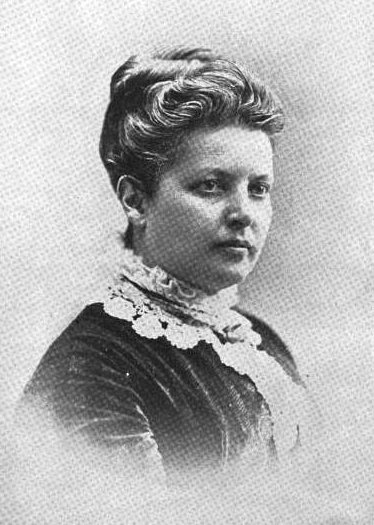
Dutton, Eugene (1893?-1966). Born and raised in Michigan, Dutton (Anishinaabe) attended the Mount Pleasant Indian Industrial School in Mount Pleasant, Michigan for an unknown number of years. He was likely sixteen or seventeen when he wrote “Playing and Haying.” After graduating from Mt. Pleasant, he served in the Army near the end of WWI, was discharged in 1919 after the war ended and in 1921, married Lillian Williams. For additional information about his life, please see Contexts on this page. [JC]
Dunbar, Paul Laurence (1872-1906). Paul Lawrence Dunbar was an African American poet, novelist and short story writer born in Dayton, OH, to freed slaves from Kentucky. He was an influential poet who gained international recognition for his poems in dialect; however, these pieces only represented a portion of a much more comprehensive output. A favorable review from influential American novelist and literary critic William Dean Howells in 1896 brought national attention to Dunbar’s writing. In the introduction to Dunbar’s Lyrics of Lowly Life (1898), Howells particularly praised the authenticity of the dialect pieces, which may have conditioned the public assessment of Dunbar’s work. Dunbar married African American poet, journalist, and political activist Alice Dunbar Nelson (née Moore) in 1898, and although they separated in 1902, they never divorced. Dunbar died of tuberculosis at the age of 33 in Dayton, OH, his hometown.
American writer Maya Angelou titled her memoir I Know Why the Caged Bird Sings (1969) after a line from Dunbar’s poem “Sympathy” (1899). [RM]
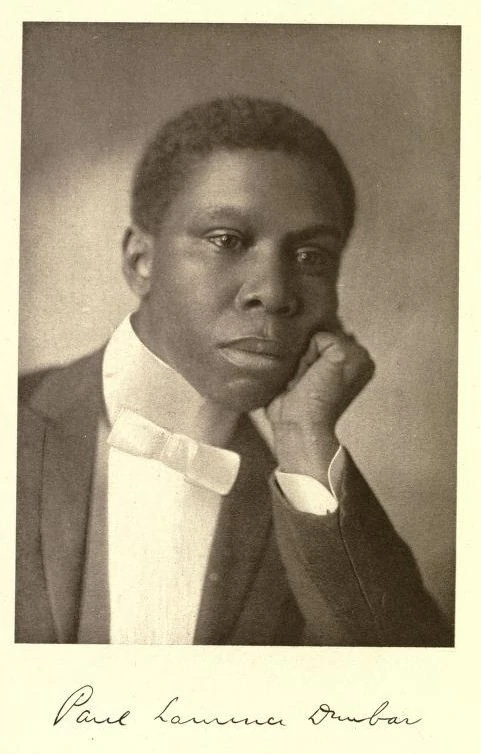
E
Eastman, Charles Alexander (1858 – 1939). Also known as Ohiyesa, Eastman was Santee Dakota and a medical doctor, earning his M.D. from Boston University. As a physician, he worked near the Pine Ridge Reservation and treated victims of the U.S. Army’s attack on Wounded Knee in 1890. As a writer, Eastman published predominantly nonfiction and is one of the most published Native American authors publishing prior to 1900. [JC]
Easton, William Edgar (1861-1936). Easton, born in New York City, was an African-American playwright, journalist, and political activist. After his mother’s death when he was only 13 years old, Easton attended Catholic educational institutions in Canada and the United States. In 1883, at the age of twenty-two, he moved to Texas and became a teacher. In addition to regular contributions to weekly and daily periodicals, he wrote the historical plays Dessalines (1893) and Christophe (1911), both about the Haitian Revolution (1791-1804). Easton died on January 10, 1936, in Los Angeles. [RM]
Ellsworth, Henry William (1814 – 1864) Henry Williams Ellsworth was born in Connecticut in 1814 and attended Yale College in 1834, earning a law degree. Later in life, he was appointed as the U.S. Minister to Sweden and Norway and resided in Stockholm for approximately 5 years. Ellsworth moved back to the U.S. in 1850, working as a lawyer for Benjamin Morse in telegraph patent cases. Along with his well known poem “To An Absent Wife,” which he wrote while in Sweden, Ellsworth also penned a wildly popular poem titled “The Cholera-King” that was originally published in The Knickerbocker magazine in 1852.[1] This poem can also be found in Early Indiana Trials and Sketches: Reminiscences (1858) by Oliver Hampton Smith and The Poets and Poetry of the West: With Biographical and Critical Notices (1860) by William T. Coggeshall. [KMB]
Emmett, Daniel Decatur (1815 – 1904). American songwriter and entertainer most remembered as creator of the song “Dixie” in 1859. Several sets of lyrics have been composed for the song, which was originally written as the closing number for a minstrel show. He was born and died in Mt Vernon, Ohio. [CH]
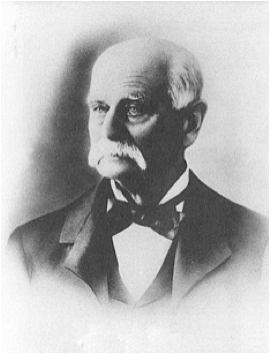
Estelle, Marie (?-?) Although little is known about Marie Estelle, you can find her educational nonfiction essays about insects in the juvenile periodical The Little Corporal: An Illustrated Magazine for Boys and Girls. She authored “The Katydids” in vol. 11, no. 5, “The Praying Mantis” in vol. 12, no. 1, and “Ladybirds” in vol. 12, no. 3 (Philadelphia Area Archives Research Portal). [KMB]
F
Farrell, Mabel (?-1927). Little is known about this African-American writer; however, Mabel Farrell (pen name Peggy Poe) was celebrated in a 1921 Des Moines Register article as a successful children’s writer from Des Moines, Iowa. The same local newspaper reported that Mrs. Mabel Farrell died in Los Angeles on January 15, 1927. She was married to Arthur Farrell, with whom she had four children. Farrell published several short stories in her lifetime, including a on-going series of stories for The Brownies’ Book about a young boy named Happy. Other works of Farrell’s include “How Daddy Possum and Pappy Rabbit Played Santa Claus,” “The Put-It-Off Folks, or Why Pappy Rabbit has Such a Short Tail,” and the play “Li’l Miss Gingersnap.” [KTB]
Fauset, Jessie Redmon (1882 – 1961). An African American editor, poet, essayist, novelist, and educator, Fauset’s work helped shape African American literature in the 1920s as she focused on portraying a realistic image of African American life and history. During this time, a positive yet realistic representation of African Americans in American literature was not prominent until the influence of Fauset. She was the editor and co-author of the children’s magazine The Brownies’ Book. She is also known for discovering and mentoring Langston Hughes, Jean Toomer, Countee Cullen, Claude McKay, among other prominent African American authors. [CB]
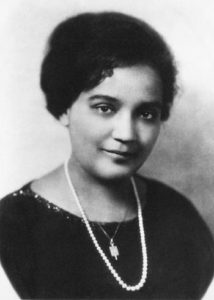
Field, Eugene (1850-1895). Eugene Field spent many years as a journalist and newspaper editor, but he is probably most remembered for his poetry for children. Field’s father was famous for representing Dred Scott in the historical Dred Scott vs. Sandford case, in which a slave sued for his freedom. Field’s mother died when he was young, and his father died when Field was 19. On his own at such a young age, he switched from one university to the next, and eventually gave up his academic pursuit to travel Europe for a while. Shortly after his return to the US, he settled down, got married, and began his long career in writing. This childhood home is now open to the public as the Field House Museum in St. Louis. [MSK]
Fisher, Ruth Anna (1886-1975). Fisher was born in Lorain, Ohio. After graduating from Oberlin College in 1906, she worked briefly at the Tuskegee Institute and taught in various schools in Ohio, Indiana, and Virginia, studied music in Canada, and directed the recreational center of a New York City YMCA. In 1920, money from benefactors allowed her to to enroll for one year at the London School of Economics. Once in London, with the help of American historian J. Franklin Johnson, she begun what would become her lifelong career as a historian. Engaging mainly with seventeenth- and eighteenth-century manuscripts related to American history that were housed in British public and private archives, Fisher worked for the Carnegie Institution of Washington and, later, for the Library of Congress. She was the first American woman hired to select, secure, and copy foreign documents for the Library of Congress. Unfortunately, many of her private papers were lost after the bombing of her London apartment in 1940, during World War II. Fisher died in Washington, DC, in 1975.
Fisher’s bio in The Upward Path: A Reader for Colored Children (1920), anthology that included her short story “A Legend of the Blue Jay” and was published the same year of her first trip to England, reads: “A.B. [Bachelor of Arts], Oberlin College. Has engaged in teaching and social service work.” She would go on to accomplish much more. [RM]
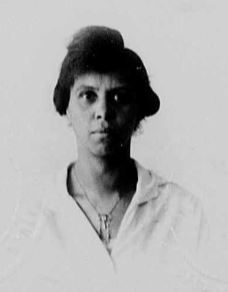
Folsom, M.M. (1857-1899). Montgomery M. Folsom, born in Georgia, was a prolific newspaper writer in the southern U.S. He contributed prose and poetry to several outlets, including The Atlanta Journal-Constitution, and his writing was widely copied and distributed. After his unexpected death, attributed to apoplexy, the Journal-Constitution published an article praising his “marvelous faculty for acquiring…knowledge” and claiming his “grasp at the salient facts of a history or a scientific treatise was remarkable from the time he was a mere boy.” [JKB]
G
Garrison, William Lloyd (1805 – 1879). A famous American antebellum abolitionist, Garrison is still known for his uncompromising anti-slavery stance and writings. His weekly newspaper, the Liberator, was published in Boston from 1831 – 1865. In 1832, influenced by the activism of American Quakers, he helped found the New England Anti-Slavery Society. [CH]
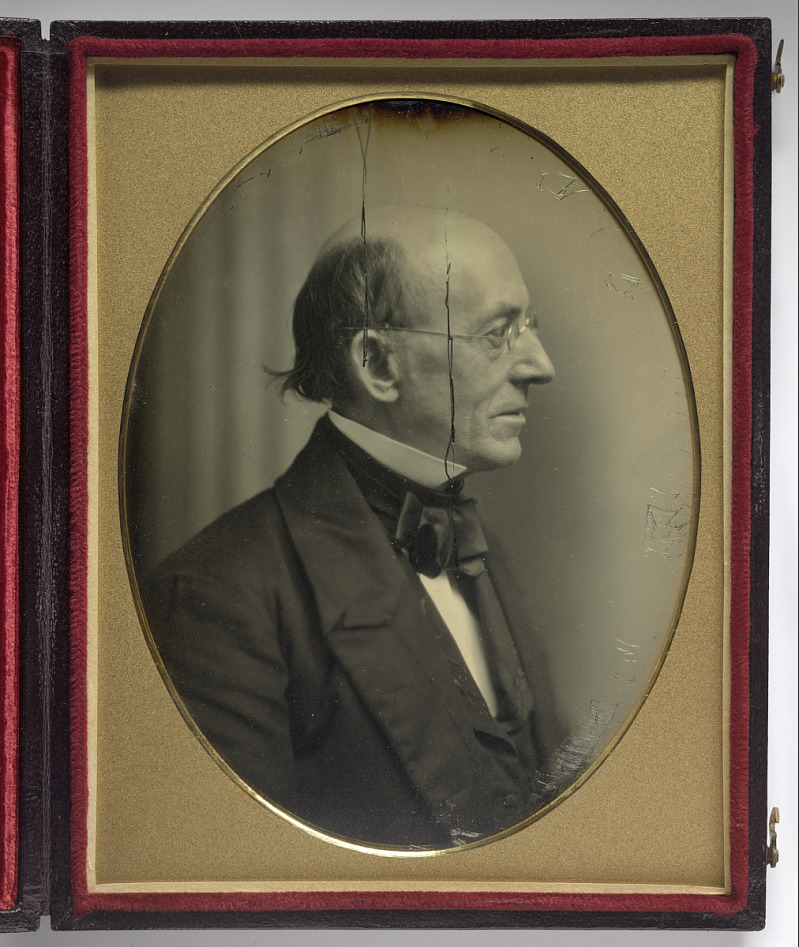
George, Louis (1889 – 1952). The child of Jennie Martin and Johnny George, Louis George was a member of the Klamath Nation. His school records show that he attended the Carlisle Indian Industrial School from 1905-1911, arriving at the age of 16 and leaving at the age of 21 after marrying Margaret Reed. George worked as a plumber and a blacksmith, both trades he learned at the Carlisle School. He would’ve been 20 or so when he wrote “Tradition of the Crows.” [JC]
Gilman, Caroline Howard (1794-1888). Sometimes writing under the pen name Mrs. Clarissa Packard, Gilman was a Massachusetts native who taught herself through the personal library of her neighbor, Governor Elbridge Gerry. Her first published work, a poem called “Jephthah’s Rash Vow” was published without her permission when she was only 16 years old. After her marriage to Revered Samuel Gilman and move to Charleston, South Carolina, Gilman embraced the culture of the American South and began to edit a juvenile weekly paper called The Rosebud. Gilman’s works are notable for portraying the similar domestic lives of both Northerners and Southerners, an effort on her part to promote unity during the divisive Civil War era. However, Gilman’s work is heavily critiqued today for promoting the idea that slavery benefitted American slaves. [KTB]
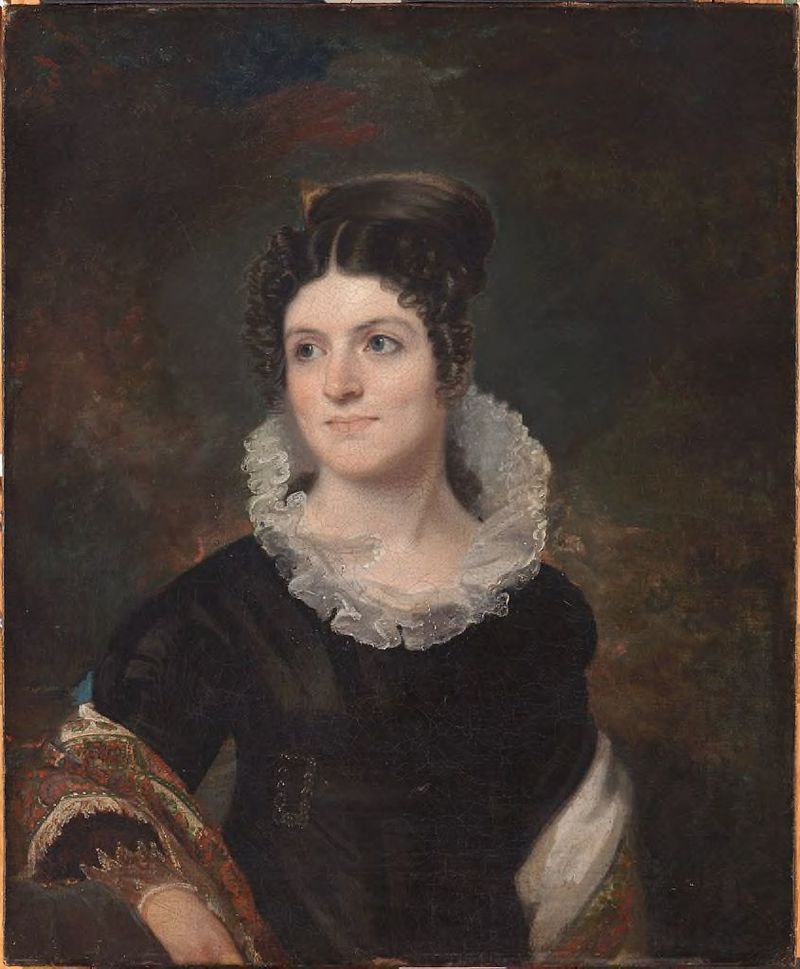
Goodrich, Samuel Griswold (1793 – 1860). Samuel Griswold Goodrich was the creator and editor of the popular literary children’s magazine Robert Merry’s Museum. He published and wrote a number of children’s works under the pen name Peter Parley. Along with his literary career, Goodrich was also a politician serving in the Massachusetts House of Representatives, state Senate, and as a consul in Paris. He died in 1860 in New York. [MSK]
H
Hale, Sarah J. (1788-1879). One of the first American woman novelists and one of the first to write about slavery, Sarah Josepha Hale was one of the most influential writers and editors of her time. In her lifetime, Hale was the editor—or as she preferred “editress”—of the Ladies’ Magazine, Godey’s Lady’s Book, and occasionally The Opal. Although she has been critiqued in recent years for her beliefs in the traditional roles of women and her lack of support for women’s suffrage, Hale was also an ardent advocate of higher education and employment for women. Today, she is most famous for authoring the nursery rhyme “Mary Had a Little Lamb” and for her campaign to make Thanksgiving a national holiday.
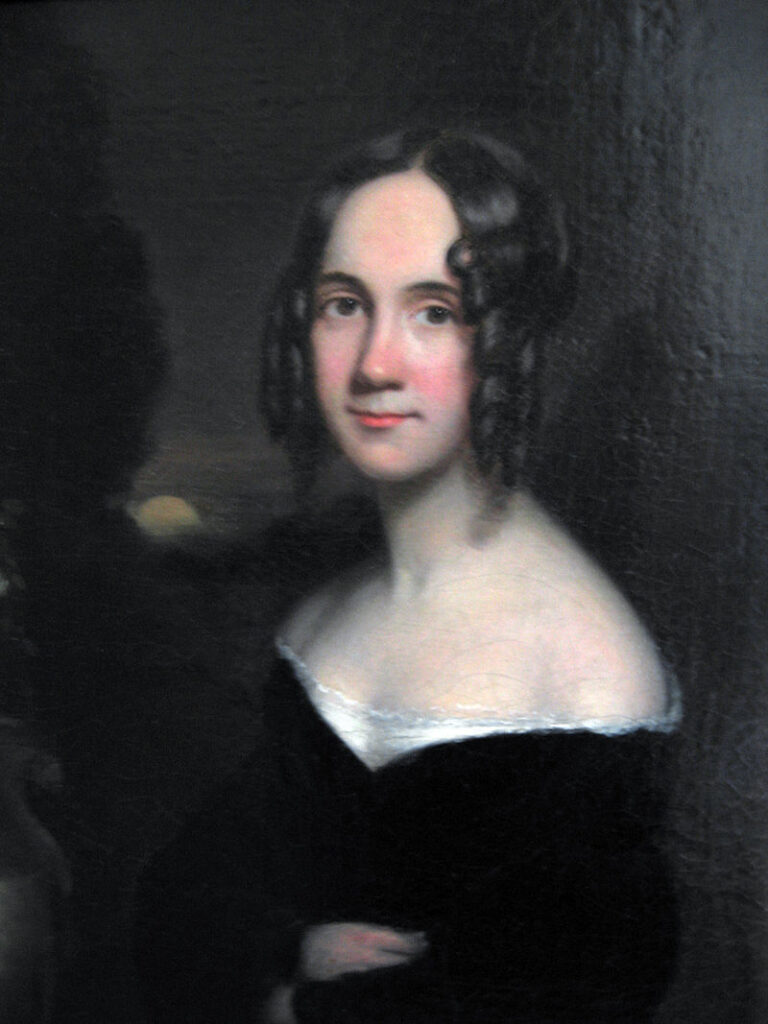
Hall, Bertie Lee. There is not much information about Bertie Lee Hall, a young woman author who contributed to The Brownies’ Book. A photograph of her appears alongside her short story “A Visit to Fairyland” in the February 1920 issue. [JKB]
Harding-Davis, Rebecca (1831-1910). Rebecca Harding Davis was an author and journalist best known for her short story “Life in the Iron-Mills.” In 1861 The Atlantic Monthly published her story about the plight of mill workers. It garnered her great acclaim as a pioneer of American realism and one of the first writers to depict industrial life. Although she published over 500 works, she was largely forgotten from the early 20th century until a new version of “Life in the Iron-Mills” was edited by Tillie Olsen and published in 1972. Now she is recognized for her portrayals of working-class characters and commentary on women’s roles. [JKB]
Harper, Frances Ellen Watkins (1825 – 1911). Ardent suffragist, poet, orator, and social reformer. Freeborn in Baltimore, Maryland, she taught school before becoming a traveling lecturer for abolition and other reform movements, often reciting her own lyrical poetry during her speaking engagements. Publishing some 80 poems in her lifetime, Harper’s most popular collection, Poems on Miscellaneous Subjects (1854) contains the anti-slavery poem “Bury Me in a Free Land.” [CH]
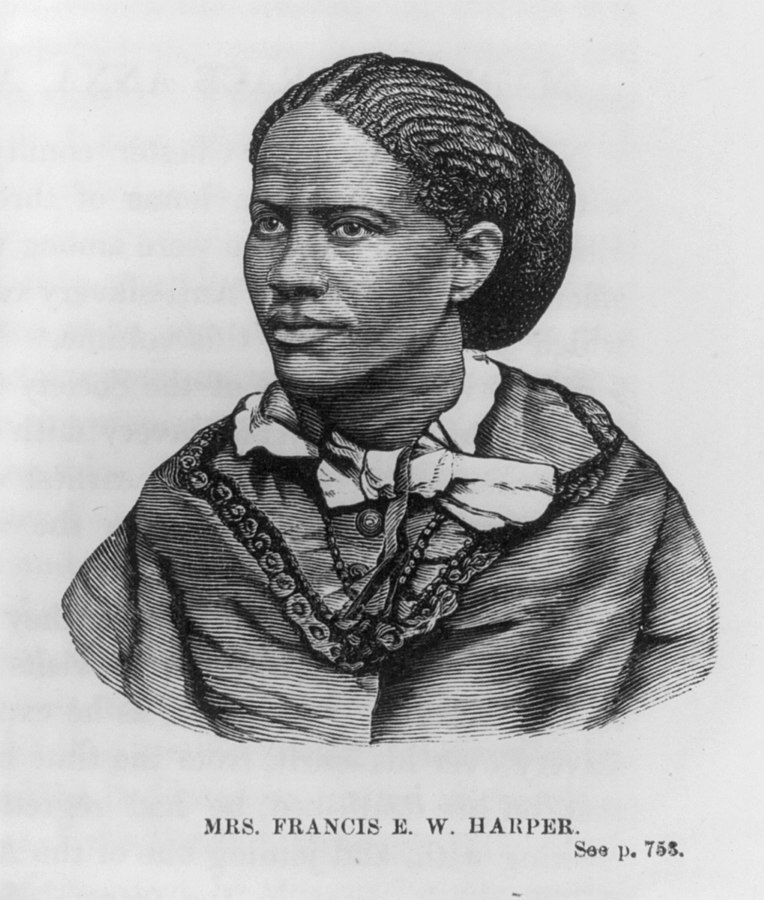
Harrold, Edna May (ca. 1917~1921). Little is known about this African American author beyond her publications, which are not many in number. In addition to publishing children’s short stories for The Brownies’ Book, Harrold wrote stories for The Crisis: A Record of the Darker Races, a magazine published by the NAACP. [KTB]
Herford, Oliver (1860-1935). Often called the American Oscar Wilde, this British-born humorist moved to Chicago with his family in the United States’ centennial year, 1876. Both an artist and a writer, he contributed regularly to St. Nicholas and to such popular adult magazines as Harper’s Weekly, Century Magazine, Life, Punch, and the Ladies’ Home Journal. He published and illustrated several books with the prominent publisher Charles Scribner’s Sons, including A Child’s Primer of Natural History (1899), from which the poems in The Envious Lobster are drawn. [KK]
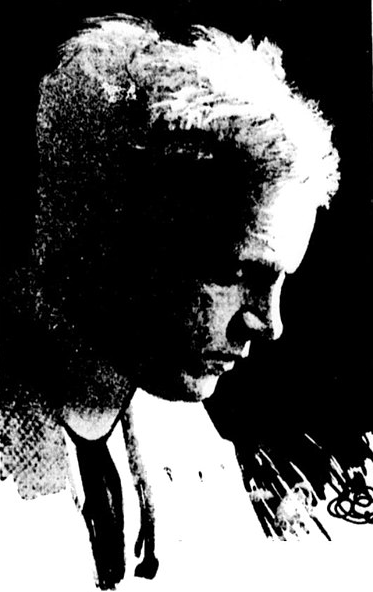
Holmes, Oliver Wendell, Sr. (1809 – 1894). Physician, poet, and humorist most remembered for his poems and for his “Breakfast-Table” series of essays. After receiving a degree from Harvard, he served as dean of the medical school and went on to achieve fame as a humorist and poet. In his time he enjoyed a worldwide reputation as a beloved American man of letters. His son and namesake would have a distinguished career on the U.S. Supreme Court. [CH]
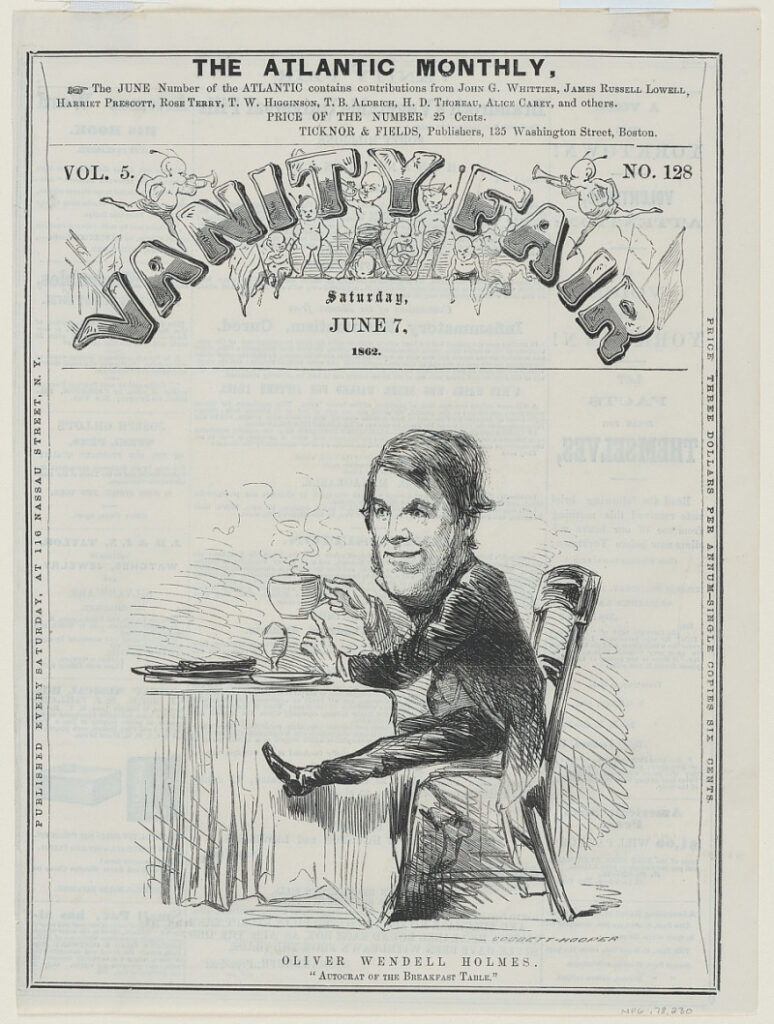
Hooker, Worthington (1806-1867). Dr. Worthington Hooker was a Yale and Harvard-educated physician and, eventually, a professor of Theory and Practice of Medicine at Yale. In addition to teaching and practicing medicine, Hooker published medical research and several natural philosophy texts for educating children. The Worthington Hooker School—located in Hooker’s final resting place of New Haven, Connecticut—is named for him. [KTB]
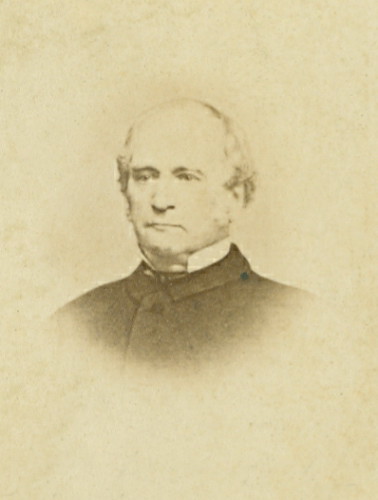
Howard-Smith, Logan (1883-1937). Born in Germantown, Philadelphia, Pennsylvania, Logan Howard-Smith was also known under the pen name Logan Marshall. His work as an editor at the John C. Winston Publishing Company allowed him to get books about current events published quickly, including Sinking of the Titanic and Other Sea Disasters and Horrors and Atrocities of the Great War. His anthology of famous stories Myths and Legends of All Nations was dedicated “to the children of America, wherever they may be”. [IM]
Howe, Julia Ward (1819 – 1910). Author, abolitionist and social reformer. Working in the abolitionist movement from her early years, it is the “Battle Hymn of the Republic,” composed in 1862 and dedicated to the Union cause, for which she is remembered. Howe worked for equal educational, professional, and economic opportunities for women, founding the New England Woman Suffrage Association in 1868, and writing travel books, drama, verse, and nonfiction, as well as songs for children. In 1908 she became the first woman elected to the American Academy of Arts and Letters. [CH]
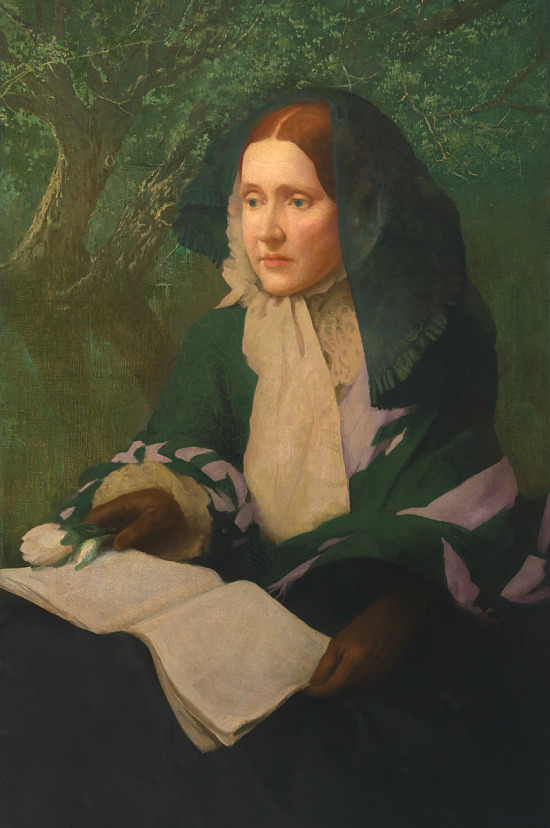
Hughes, Langston (1902 – 1967). Many know Hughes in the context of the Harlem Renaissance; a cultural and literary movement emerging in the mid-1910s and continuing through the 1920s alongside the “New Negro” Movement. This time period in American history saw the emergence, and proliferation, of positive and realistic stories of black Americans written by, and for, black Americans. A poet, essayist, playwright, novelist, and short story writer, Hughes was first published in The Brownies’ Book, a magazine created by W.E.B. Du Bois. This publication provided black children a variety of fiction and nonfiction writing that was entertaining, educational and promoted a sense of pride in their racial and cultural identities. [1,2,3] [KMB]
I
Ide, AM (1825-1873). Abijah Metcalf Ide, Jr. (A.M. Ide, Jr.) was born in Attleboro, Bristol, MA to Chloe Read and Abijah Metcalf Ide. Ide was an American farmer, editor, author, and poet. Ide had a close relationship with Edgar Allen Poe. See their letters here. [AA]
Irving, Washington (1783-1859). Perhaps most famous for his short stories “The Legend of Sleepy Hollow” and “Rip Van Winkle”, Washington Irving was one of America’s first professional writers. Including works published under his pen names: Diedrich Knickerbocker, Geoffrey Crayon, and Jonathan Oldstyle, he published eighteen works of poetry, short stories, satire, correspondence, and history. He died in Sunnyside, Tarrytown, New York, and is buried in the Sleepy Hollow Cemetery. [IM]

J
Johnson, Margaret. Margaret Johnson was a prolific writer and illustrator of prose and poetry for children’s periodicals, particularly St. Nicholas; an Illustrated Magazine for Young Folks and The Youth’s Companion. She often illustrated her own work with numerous detailed black and white drawings, depicting scenes from her writing with impressive artistic skill. [JKB]
Johnson, Georgia Douglas (1880-1966). Born in Atlanta, Georgia, Johnson was part of the Harlem Renaissance, a period of cultural revival and reassessment of African American art and scholarship in the United States that began approximately after World War I. Johnson was an educator, poet, columnist, and playwright, whose first poems appeared in The Crisis in 1916. She pursued her literary ambitions despite her husband’s pressure to limit herself to homemaking. After her husband’s death, she became the sole supporter of their two sons. The Saturday gatherings she held weekly at her home in Washington, DC, the “S Street Salon,” helped create an important community of black writers, particularly women. In 1965, she received and honorary doctorate in literature from Atlanta University. According to Afro-American Writers from the Harlem Renaissance to 1940, edited by Thadious M. Davis and Trudier Harris, when Johnson died in 1969, playwright “May Miller sat by her bedside stroking her hand and repeating quietly over and over, ‘Poet Georgia Douglas Johnson’.” [RM]
Johnston, Harry (1858 – 1927). Sir Harry Johnston was a British explorer, botanist, artist, and linguist. His travels took him all over the continent of Africa, and he spoke many African languages. He published about 40 books, including The Uganda Protectorate. You can learn more about Sir Johnston here. [AA]
Johnson, James Weldon (1871-1938). A native from Jacksonville, Florida, James Weldon Johnson was a poet, novelist, educator, diplomat, and civil rights leader active in the NAACP. In 1906 and 1909, he was appointed U.S. consul to Venezuela and Nicaragua, respectively. In 1900 he wrote the lyrics for “Lift Every Voice and Sing,” which is known as the Black National Anthem. His younger brother, composer J. Rosamond Johnson, set it to music. [RM]
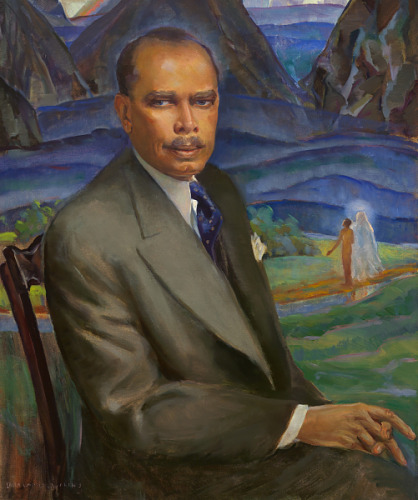
Judson, Katherine Berry (1871 – c. 1929). Katherine Berry Judson was born in Poughkeepsie, New York. She was educated at Cornell University, the University of Washington, and the New York State Library School. She was a librarian, historian, and research instructor in Northwest history at the University of Washington. Little else is known about her except that she published several anthologies of Native American folklore and the novel When the Forests are Ablaze. [IM]
K
Keller, Helen Adams (1880 – 1968). Born in Alabama, Helen lost her sight and hearing at the age of 19 months, and soon became mute as well. At age seven she began instruction with Anne Sullivan, who also suffered from difficulties with her eyesight. Beginning with the manual alphabet pressed into her palm, Helen learned quickly under Anne’s tutelage, and her teacher remained with her until Sullivan’s own death in 1936. Helen went on to graduate from Radcliffe, read and write in Braille, lecture, work for the cause of woman suffrage, and involve herself in socialist and humanitarian causes. Her articles appeared in magazines and she wrote of her life in several books. She received the Presidential Medal of Freedom, the highest civil honor for peaceful service, in 1964. [CH]
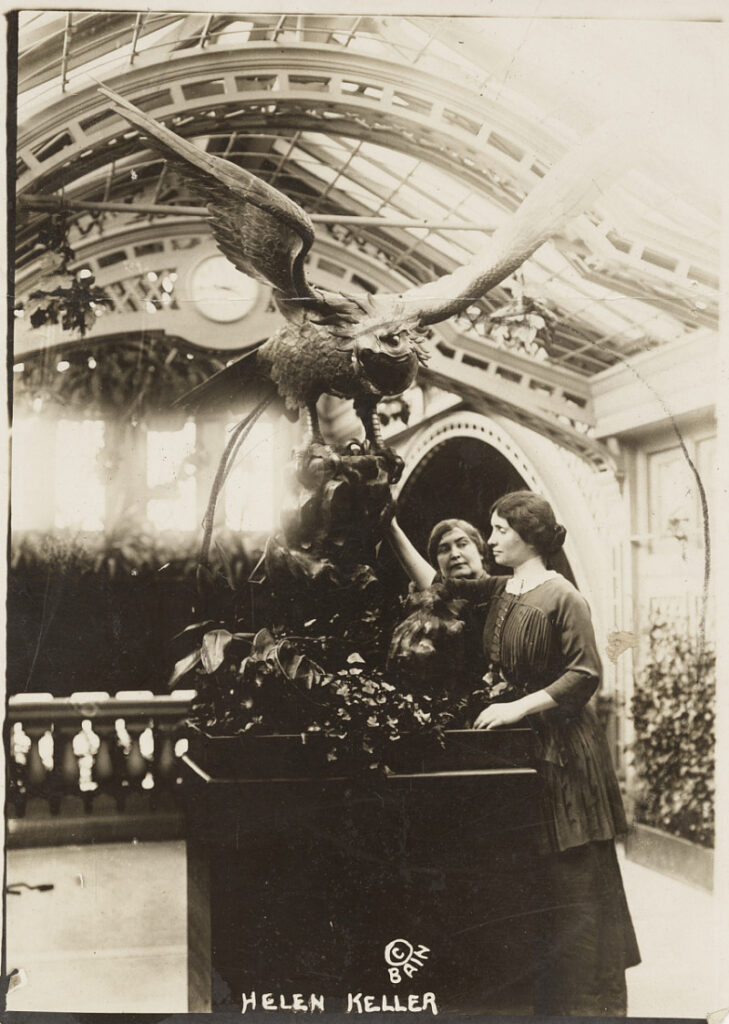
Krout, Mary Hannah (1851-1927). Mary Hannah Krout was an American journalist, author, and women’s suffrage advocate who started her career as an educator. While working for by The Chicago Inter-Ocean as a foreign correspondent, she travelled to Hawaii, London, Australia, and China. She died at 75 in her hometown of Crawfordsville, Indiana. [RM]
L
Larcom, Lucy (1824-1893). Lucy Larcom was a teacher, author, and editor. She helped found Rushlight Literary Magazine at Wheaton College (Wheaton Female Seminary), which is still in print, and edited Our Young Folks, which later became part of St. Nicholas; an Illustrated Magazine for Young Folks. She published poems, spiritual writing, and an autobiography titled A New England girlhood, outlined from memory. Larcom’s account of her upbringing in New England, which included becoming a laborer in the Lowell textile mills at 11 years old, provides a glimpse at gender, labor, and class in the 19th century. [JKB]
Lazarus, Emma (1849-1887). Emma Lazarus, born and raised in New York City, began her writing career in her teenage years. Early on, her writing gained the attention of a number of famous writers, including Ralph Waldo Emerson, who became a mentor for Lazarus. Lazarus was also a renowned advocate for Jewish-American rights. She is probably most known for her “The New Colossus” (1883) which is inscribed on a plaque beneath the Statue of Liberty. [MSK]
Lear, William (Lummi; 1866-1947) Tracing the lives of nineteenth-century Native American authors is challenging. We know few concrete details about William Lear’s life. The Lummi are “the original inhabitants of Washington’s northernmost coast and southern British Columbia.” The Lummi Nation’s current website describes the tribes traditional lifeway: “We are fishers, hunters, gatherers, and harvesters of nature’s abundance. We envision our homeland as a place where we enjoy an abundant, safe, and healthy life in body, mind, society, environment, space, time and spirituality; where all are encouraged to succeed and none are left behind.” William Lear was a student at the Tulalip Indian School in Tulalip, Washington when he was around fifteen years old. At eighteen or nineteen, he was among the Catholic Native American signatories to a petition to Pope Leo XIII to support the canonization of Kateri Tekakwitha (Mohawk; 1656-1680), who was eventually canonized in 2012. Native American Census Rolls reveal that he was married twice: first, to Rosalie Nix (1874-1912), probably when he was around twenty-one. In 1892, when he was twenty-six, the household also included his 4-year-old daughter, Celina; his widowed mother, fifty-year-old Mary; and his thirteen-year-old brother Thomas. With Rosalie he had six daughters and two sons; all lived to adulthood except Stella Marie, who died at age nine. Rosalie died in 1912, and by 1914 William had married Lizzie, and the family included her four sons and two daughters, with their ages ranging between five and twelve. By 1917 he was widowed again and living with his daughters Dorothy and Irene and sons Raymond and Ronamus. We have no record of his life beyond these family details. William died in 1947 and is buried in the Lummi cemetery in Whatcom County, Washington. [KK]
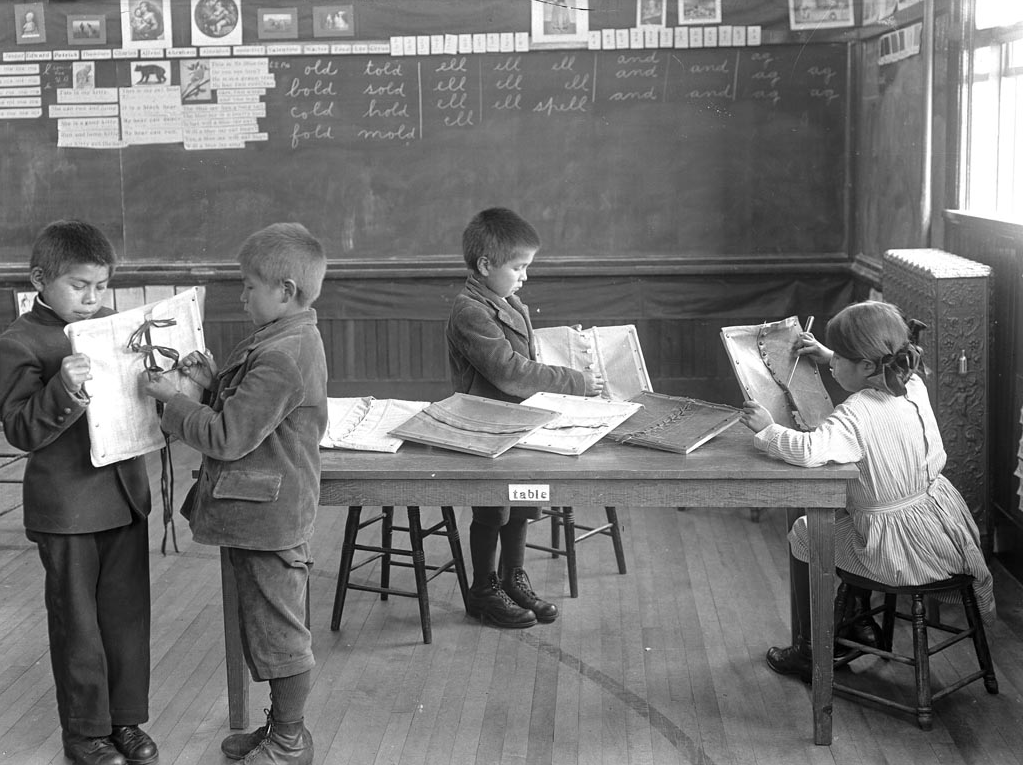
Lee, Mary Effie (1885 – 1979). Known as Effie Lee Newsome after her 1920 marriage to the Reverend Henry Nesby Newsome, Lee was born in Philadelphia in a prominent Black family. Her father, Dr. Benjamin Franklin Lee, served as president of the country’s first Black college, Wilberforce University; he was also a bishop in the African Methodist Episcopal Church. Lee was famous for her nature writing and children’s poems during the Harlem Renaissance. Among her noteworthy publications was Gladiola Garden: Poems of Outdoors and Indoors for Second Grade Readers (1940). Lee worked for The Crisis Magazine, the monthly publication of the NAACP, where W. E. B. Du Bois worked as her editor. From 1925 until 1929, Lee edited the children’s column in The Crisis called “The Little Page.” Here, it was Lee’s job to carry out Du Bois’s goal for The Brownies’ Book: to encourage young Black children to feel pride for their race. Newsome worked as a teacher and librarian during her long life, especially valuing education for children. [CB/KK]
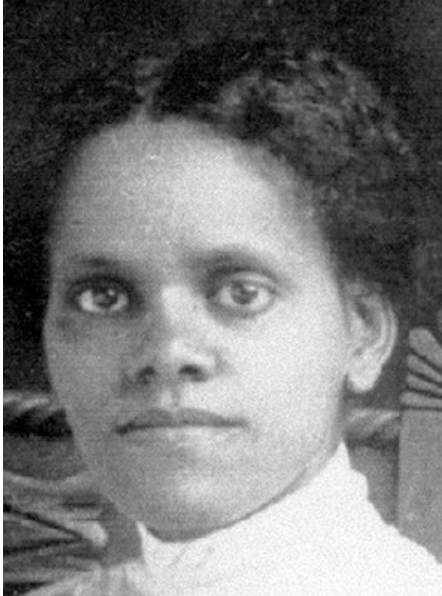
Longfellow, Henry Wadsworth (1807 – 1882). An American poet and educator, Longfellow was born in Portland, Maine, which was then still part of Massachusetts. Longfellow’s most popular works were primary lyric poems known for their musicality, often incorporating mythology. During his time, Longfellow was the most popular American poet and also found success outside of America. [CB]
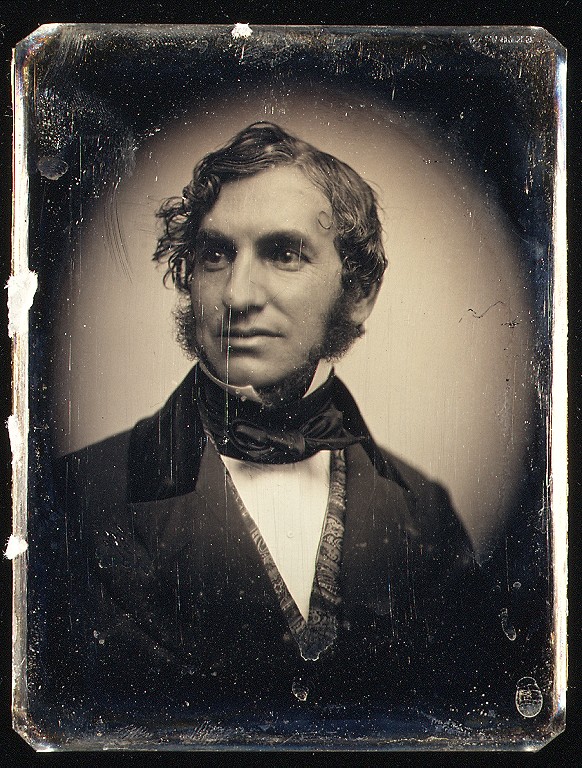
Lummis, Charles Fletcher (1859-1928). Harvard educated ethnomusicologist, author, and editor, Charles Fletcher Lummis first became interested in the cultures of Native Americans and Mexican Americans while on a cross-country hike from Ohio to California. He was the city editor of the Los Angeles Times from 1885-1887, he was also the editor of Land of Sunshine/Out West from 1894-1909, changing the name of the magazine in 1902. He founded the Landmarks Club (1895), which fought for the preservation of historical sites in California, and the Sequoia Club (1902), which fought against the Bureau of Indian Affairs for the rights of Native Americans. He also founded the Southwest Museum in Los Angeles (1907). [IM]

M
MacDonald, George (1824-1905). Proud Christian and Scotsman, George MacDonald was a prolific author and poet, publishing forty-five works of fiction, fourteen collections of poetry, and thirteen works of non-fiction as well as several plays. He is most well known for his works of fantasy and fairy-tales for children. Called a mythopoeic writer by C.S. Lewis, he is credited for establishing the nineteenth-century tradition of symbolic fantasy fiction.[IM]
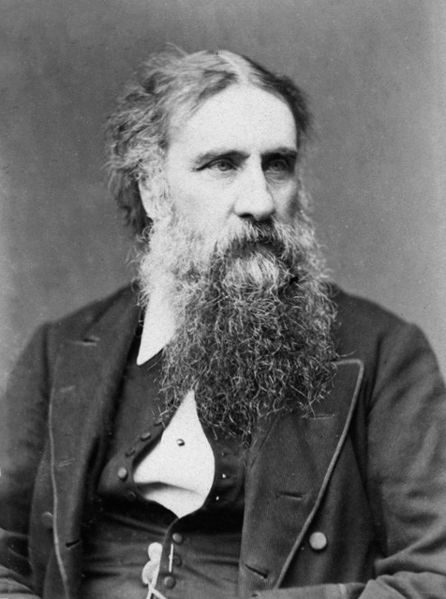
Masters, Edgar Lee (1868 – 1950). Born in Garnet Kansas, Edgar Lee Masters rose to fame in 1915 with the publication of Spoon River Anthology. He continued writing, publishing thirty-nine more books, including novels, plays, collections of poetry, and biographies of Lindsay, Twain, Whitman, and Lincoln. In the 1940s he was awarded the Poetry Society of America Medal, the Shelley Memorial Award, and the Academy of American Poets Fellowship. Master died in Melrose, Pennsylvania, and is buried in Petersburg, Illinois.[IM]

Miller, Harriet Mann (1831-1918). Writing under the names Olive Thorne or Olive Thorne Miller, Harriet Mann Miller was a lifelong bookworm and creative writer. Later in life, after the birth of her children, she developed an interest in natural sciences, particularly ornithology. She began writing expository articles for children and particularly enjoyed writing natural history sketches that she later compiled into a book, Little Folk in Feathers and Fur. Miller was not only a prolific writer and member of the Illinois Audubon society, but also well-respected by biologists for the accuracy of her natural science writing. [KTB]
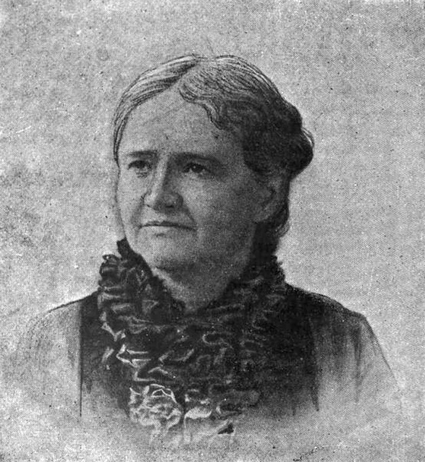
Montgomery, Lucy Maud (1874-1942) was a Canadian author who published twenty novels, numerous poems and short stories, personal journals, and non-fiction. She began writing at an early age and said that writing was her salvation. Her poem, On Cape LeForce, was published in The Patriot newspaper on Prince Edward Island when she was seventeen.
Her first novel, Anne of Green Gables, was first published in 1908 and led to eight books featuring Anne. It has sold more than 50 million copies and has been translated into more than 35 languages (Tousignant 2018) and continues to be popular today.
In addition to her writing, she promoted young Canadian authors and was a proponent of Canadian regionalism. She was an active member of the Canadian Authors Association since its founding in 1921.
Despite her literary success, she struggled with dishonest publishers and professional attacks from some Canadian literary critics who accused her of writing sentimental fluff. She also endured family difficulties which ultimately caused severe physical and mental health problems.
Her significant collections (including personal journals, photographs, needlework, two book manuscripts, and her personal library) are archived in the McLaughlin Library’s Archival and Special Collections at the University of Guelph. A comprehensive biography, Lucy Maud Montgomery: The Gift of Wings, by Mary Henley Rubio, was published by Anchor Canada in 2010. [MM]
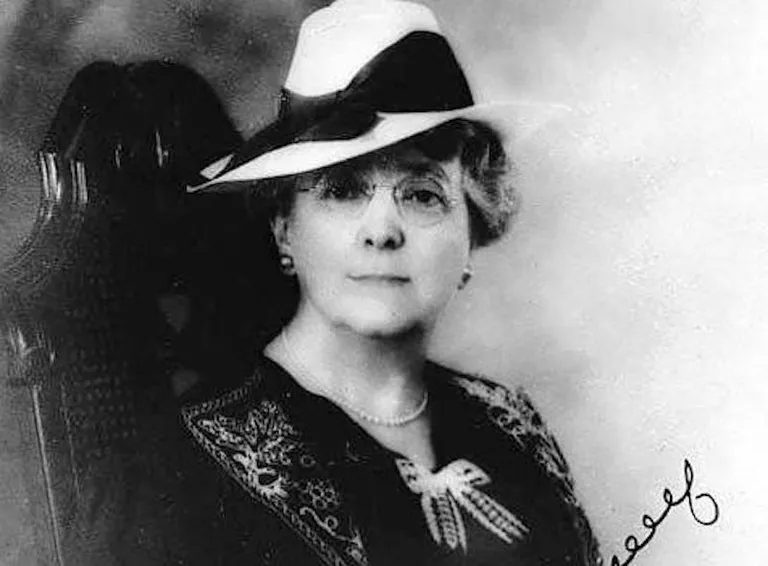
Moten, Cora Jean Ball (1879-1956). Moten was born in Quincy, Illinois. She married Jonas Moten in 1897, with whom she had two children. Although she figures in our anthology as a poet, Moten gained some success as a fiction writer and also worked as a schoolteacher in Los Angeles. In his 2021 book Black Pulp: Genre Fiction in the Shadow of Jim Crow, English Professor Brooks E. Hefner credits Moten’s pulp serial “The Creeping Thing” (1929), a supernatural detective thriller, as “the first zombie story in African American literary history.” Moten also published the serials “The Black Lily” and “Struggling Hearts.” A byline for “The Black Lily” from 1931 in The Topeka Plaindealer describes Moten as a “nationally known serial writer.” She died in Los Angeles, California. [RM]

Muir, John (1838 – 1914). Farmer, inventor, naturalist, conservationist, and writer. Throughout his childhood, John became a more and more loving observer of the natural world. In 1867, while working at a carriage parts shop, Muir suffered an eye injury that blinded him and changed his life. When he regained his sight and healed, he developed a strong sense of wanderlust that drove him to explore. In his life, he published Our National Parks, My Summer in the Sierra, and other works documenting his love of the natural world. See more about Muir in his biography from The Sierra Club. [AA]
N
Neal, John (1793 – 1876). Called America’s first art critic, Neal was born and died in Portland, Maine. A man of varied interests and accomplishments, including writer, attorney, editor, and entrepreneur, Neal also founded Yankee literary magazine. His drama, “Instincts of Childhood” appeared in the Anti-Slavery Picknick in 1843. [CH]
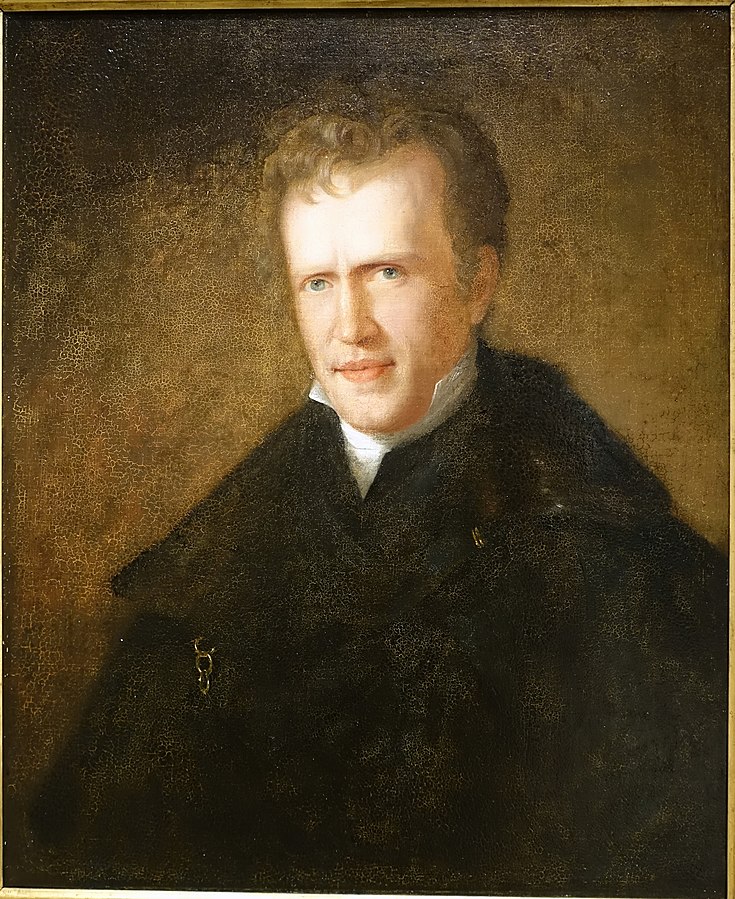
c 1823, oil on canvas
Newsome, Effie Lee (1885-1978). See Lee, Effie.
Olcott, Frances Jenkins (1872–1963). Born in Paris, France, Frances Jenkins Olcott spent much of her childhood in and around Albany, New York where her father’s family lived. She developed and became the first head of the Children’s Department at Carnegie Library of Pittsburgh in 1989. Believing that children should have access to stories, she developed public outreach to homes and detention centers. She also organized a formal training program, The Training School for Children’s Librarians. Olcott also authored, edited, or contributed to twenty-five publications for children. [IM]
P
Poe, Peggy. (?) See Mabel Farrell. [KTB]
Poepoe, Joseph Mokuohai (1853-1913) was Kānaka Maoli (Native Hawaiian) and a promoter of Native Hawaiian language, knowledge, and culture. He worked as a writer, politician, newspaper editor, and attorney. Through his newspaper and his own writings, he argued for Native Hawaiian sovereignty, though notably became a pro-annexationist following the 1895 Wilcox rebellion that sought to return Liliʻuokalani to the throne, following significant U.S. interruption in Hawaiian sovereignty efforts. [JC]
Posey, Alexander (Muskogee/Creek; 1873-1908) Poet, humorist, and journalist, Posey was internationally celebrated at an early age. His mother Nancy Phillips was a full-blood Muskogee Creek; his father Lewis H. Posey was Scots-Irish. The oldest of their twelve children, Posey grew up in Indian Territory near present-day Eufaula, Oklahoma. Educated at Bacone College, a Native American school, he read widely, becoming a prominent member of the Muskogee Creek Nation and serving in various key official capacities. He also worked as an interpreter for the infamous Dawes Commission, which was a federal commission charged with determining tribal membership in what were called “the Five Civilized Tribes.” The commission was also responsible for the problematic allotment of land to individuals, which resulted in massive appropriation of communally held Indian lands. Later, Posey served as secretary to the Sequoyah Convention, an Indian-led meeting that drafted a constitution for what they envisioned as a new U.S. State formed from Indian Territory, one of the “Twin Territories,” which then comprised the eastern half of the current state of Oklahoma. He married teacher Minnie Harris in 1896, and the couple had three children. For some of his writing, including poetry in the important territorial magazine Twin Territories edited by Ora Eddleman Reed (Cherokee), Posey used the pseudonym Chinnubbie Harjo, which referenced the mythical Muskogee figure of the same name. Originally a hero endowed with supernatural abilities, this culture hero also embodied human weaknesses. According to contemporary U.S. Poet Laureate Joy Harjo, the surname Harjo signifies “So brave, you’re crazy.” Appearing first in the Eufala, Oklahoma, Indian Journal, a weekly newspaper that he owned and edited, his satirical Fus Fixico letters presented conversations between the persona of the same name and his fictional full-blood Creek contemporaries. In these popular and celebrated letters, Posey explored—and exposed—conditions in Indian Country. Following his tragic death by drowning in the Oktahutchee River when he was only 34 years old, his wife Minnie collected his work in The Poems of Alexander Lawrence Posey. Posey’s famous letters have recently been collected in The Fus Fixico Letters: A Creek Humorist in Early Oklahoma.
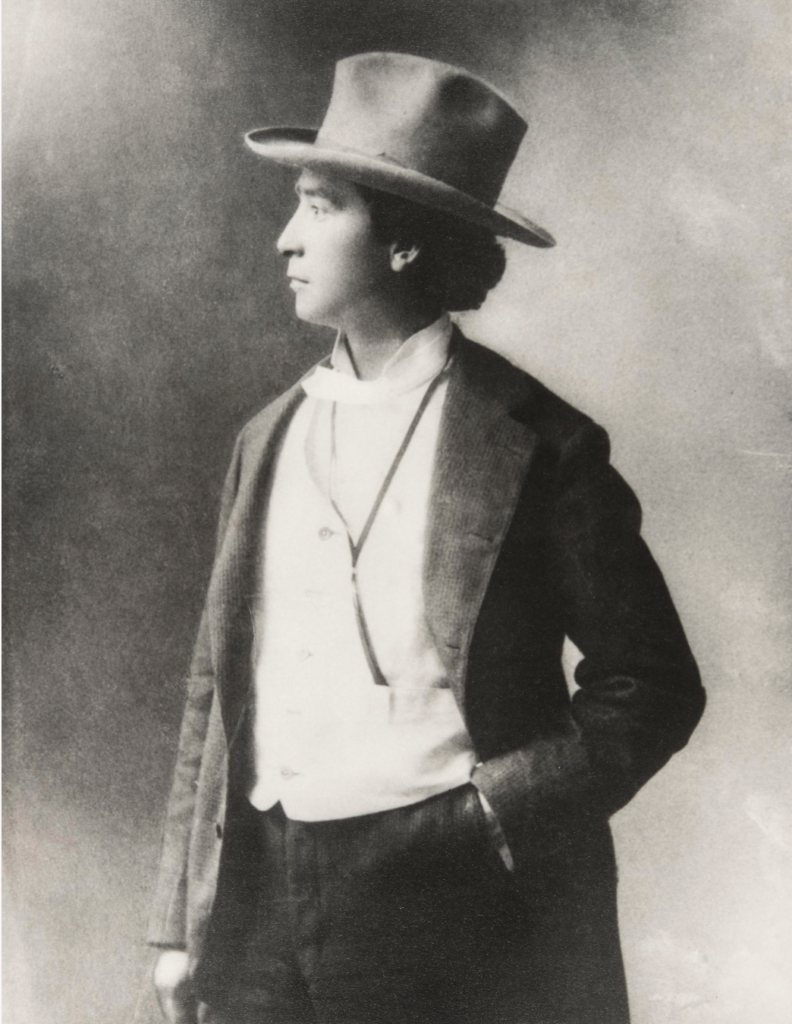
Courtesy Gilcrease Museum.
Powers, Mabel (1872-1966) Born Ella Mabel Powers in in Hamburg, NY, Powers, a white woman, spent her life sharing Native American stories. David Geary notes, in one of only a small handful of sources that discuss her life or works, “In 1910, Powers was invited to participate in the Green Corn Ceremony held on the Tonawanda Seneca Reservation near Akron, New York. There, she was adopted into the Snipe Clan of the Seneca Indians, one of the six Iroquois nations.” It was here that she received the name Yeh Sen Noh Wehs (the One Who Carries and Tells the Stories) following her adoption. She continued writing and lecturing until just a few years before her death, giving her last lecture in 1961, at the age of 89. [JC]
R
Richards, Laura E. (1850-1943). Laura Elizabeth Howe Richards published over 90 books and was known for her biographies, poetry, and children’s writing. Richards’ mother, Julia Ward Howe, wrote the lyrics to “The Battle Hymn of the Republic.” Richards frequently contributed to local newspapers as well as St. Nicholas; an Illustrated Magazine for Young Folks. Her biography of Julia Ward Howe, co-authored with her sisters, won her the Pulitzer Prize in 1917, and her children’s book Tirra Lirra won the Lewis Carroll Shelf Award in 1959. [JKB]
S
Sampter, Jessie E (1883-1938).
Jessie Ethel Sampter was born on March 22, 1883, in New York City. Having contracted polio as a child, Sampter spent much of her childhood confined to her bed. She was educated at home, was an avid reader, and later audited classes at Columbia University.
Sampter began writing poetry in her twenties, and her work focused on themes of Zionism, social justice, and pacifism, particularly between the Arabic and Jewish peoples. In 1919, Sampter immigrated to Palestine, where she helped establish the country’s first Jewish Scout camp and a convalescent home, as well as classes for Yemenite women and girls.
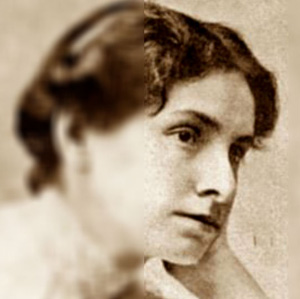
Sampter published several books on philosophy and religion, as well as five poetry collections. [MM]
Seward, Frances (Fanny) Adeline (1844-1866). Frances “Fanny” Seward was an adolescent writer who contributed a number of pieces, under the pen name “Pansy,” to the popular children’s magazine Robert Merry’s Museum. Seward’s father was active in the political world where he was a New York senator, governor, and US Secretary of State under Abraham Lincoln. Her mother was an active abolitionist and opened the Seward home to the Underground Railroad. After contracting typhoid fever as a child, Seward remained in poor health for the rest of her life and died at the young age of 22. [MSK]
Shelton, Chief William (1869-1938), also known as Wha-Cah-Dub, was the last hereditary Chief of the Snohomish Tribe. He was a master carver whose story, or spirit, poles have been displayed across the country. His books focused on Tribal stories and narratives associated with specific totems and totem poles. [JC]
Sheppard, William Henry (1865-1927). Sheppard was a pastor, explorer, missionary, social worker, collector of African art, and fellow of the Royal Geographical Society. Born in Waynesboro, Virginia, he graduated from the Hampton Institute and from the Tuscaloosa Theological Institute, a black Presbyterian institution in Alabama. In 1887, he became ordained in the Presbyterian Church of the United States. In 1889, he travelled to Africa as a missionary alongside a young white minister; together, they founded the American Presbyterian Congo Mission. A 1908 article written by Sheppard denounced the cruelty and abuses of an African mercenary tribe working on behalf of rubber companies, and criticized the complicity of the kingdom of Belgium in these atrocities. Sheppard’s subsequent trial for libel after a complaint from the Kasai Rubber Company helped bring international attention to the colonial crimes in Africa. He was acquitted. In 1910, Sheppard was forced to abandon his African mission by the Presbyterian Foreign Missions department, due to rumors of his many affairs in Africa and for having fathered an illegitimate child. After his return to the United States, Sheppard moved to Louisville, Kentucky, with his wife and children, where he kept working as a pastor and where he died from a stroke in 1927. [RM]
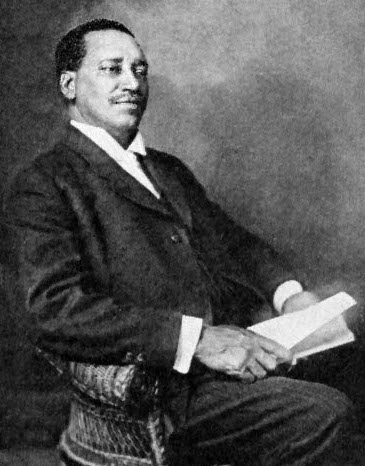
Sigourney, Lydia H. (1791 – 1865). A popular writer, known as “the sweet singer of Hartford.” She published her first book Moral Pieces in Prose and Verse in 1815. After she married her husband (Charles Sigourney), he encouraged her to publish her writing anonymously, which she did until their family encountered financial distress. Sigourney quickly found out that she was a really successful writer and ended up publishing dozens of poetry volumes and essays. See a more in-depth biography from the Poetry Foundation here. [AA]
Silverstadt, Frank (1892-1960). Better known by his stage name Frank Silver, Silverstadt was born in Boston Massachusetts, and grew up on the Lower East Side of Manhattan. He was an orchestra leader, songwriter, drum player, and vaudeville performer. He wrote many songs in the 1920s including “Yes! We Have No Bananas”, “Icky Wicky Woo”, and “What Do We Get from Boston (Beans, Beans, Beans)”. [IM]
Skinner, Charles Montgomery (1852-1907). Born in Victor, New York, Skinner worked outside the folklorist mainstream to produce his best-known work, Myths and Legends of Our Own Land in 1896, the first regionally organized folklore anthology for the general public. He never joined the American Folklore Society, nor was he or his work ever mentioned in the Journal of American Folklore. Yet his work was very popular, printing five editions in its first year. Interested in New England transcendentalism, Skinner also published nature writings and works on issues of public concern. [IM]
Slade, MBC (1826 – 1882). Mary Bridges Canedy Slade was a minister’s wife, a teacher, and a poet. She was also the assistant editor of the New England Journal of Education. She was mostly known for her work on hymns, educational materials, and Sunday school materials. You can see more of Slade’s work here. [AA]
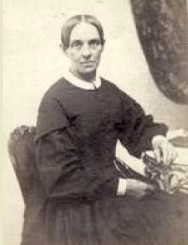
Sophocles (c. 496 BCE – c. 406 BCE). Athenian playwright Sophocles was born at the beginning of Athens golden age. His many plays are a highlight in the art and literature of fifth-century Greece. He wrote more than 120 plays, competing against, and often beating, Aeschylus and Euripides in drama competitions. Unfortunately only seven plays have survived to the present day, including the Œdipus cycle, “Electra” and “The Trachiniae”. [IM]

Spence, Eulalie (1895 – 1981). From the West Indies, Spence was a Black writer, director, teacher, and playwright during the Harlem Renaissance. Eventually known as one of the most experienced Black female playwrights of the time, she also won several playwright competitions. Spence worked with W. E. B. Du Bois’s Krigwa Players from 1926 to 1928, helping make the guild more known. However, she and Du Bois disagreed artistically, which eventually led to the disbanding of the Krigwa Players. [CB]
Stevenson, Helen. We know little about Stevenson, an African American girl farmer whose personal essay on winning a corn-growing contest appeared in The Crisis magazine in 1914. At the time, she lived in Cumberland County, New Jersey.
Stone, Eudora May (c.1861–?). We know little about this youthful author—only that she lived in Nebraska and was an avid reader and writer. Stone contributed regularly to nineteenth-century American children’s periodicals like St. Nicholas and Our Young Folks beginning as early as age ten. Her work appeared in an 1879 American school-book called Scrap-Book Recitation Series; in 1884 she published a poem called “The Happy Bud” in St. Nicholas magazine, edited by Mary Mapes Dodge [cross-reference here]. [KK]
Stowe, Harriet Beecher (1811-1896). Uncle Tom’s Cabin (1852), Stowe’s worldwide antislavery bestselling novel, made her a household name. The well-educated author taught at her sister Catherine Beecher’s Hartford Female Seminary before she married Calvin Stowe in 1836. Despite eventually having seven children and little household help, the indefatigable author eventually published thirty books, both domestic and literary. Like most nineteenth-century authors, she also wrote children’s literature, including numerous stories for one of the period’s most popular periodicals, Our Young Folks. In 1867 she collected many of these stories in her own Queer Little People. She particularly enjoyed writing about animals, including her family’s dogs. [KK]
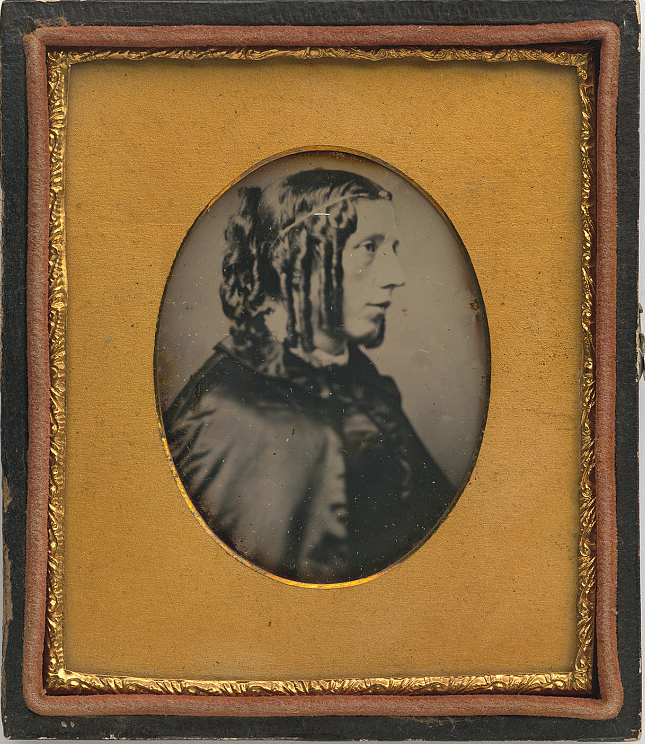
Unknown photographer. Courtesy Smithsonian Institution/CC0
Stratton-Porter, Gene, né Geneva Grace Stratton (1863-1924). Stratton-Porter was born in Wabash County, Indiana, the youngest of 12 children. She was a nature writer, novelist, poet, and photographer. In her works, direct contact with nature is usually represented as a source of moral goodness. A prolific writer, her sentimental novels Freckles (1904) and A Girl of the Limberlost (1909) were huge commercial successes. In 1922, she organized a film company to produce versions of her stories. Stratton-Porter died in 1924 in Los Angeles, California, in a tragic car accident. [RM]
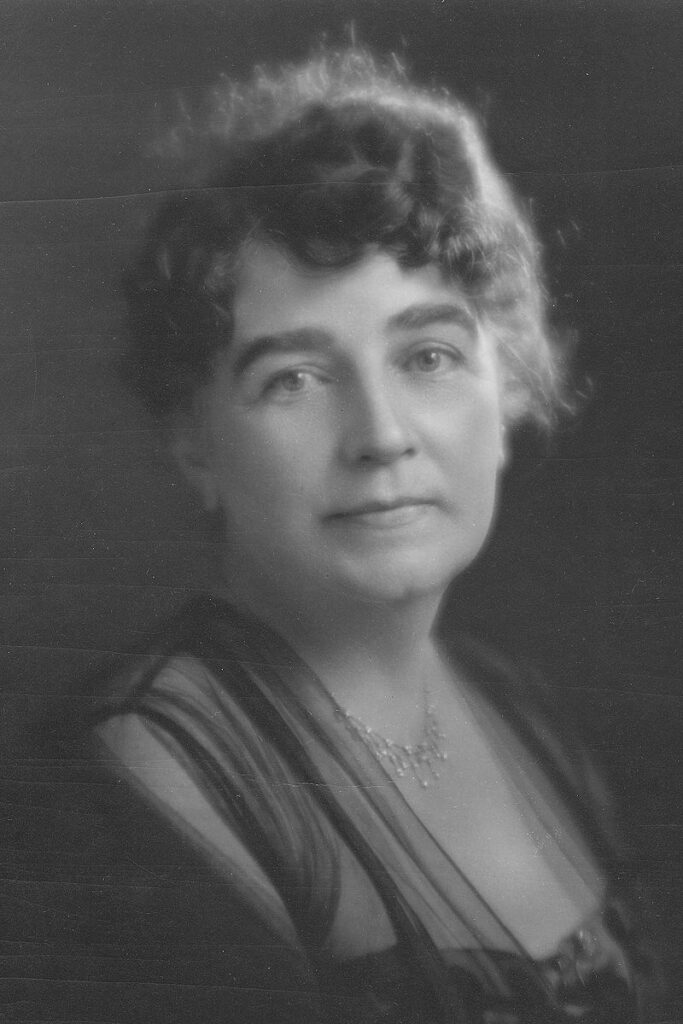
T
Taylor, Orlando C.W. (Capitola Ward) (1891-1979). Taylor was born in Texas in 1891 and moved with his family in 1913 to New Orleans, Louisiana. An educator, journalist, and radio host, he co-founded in 1925 The Louisiana Weekly, the first New Orleans’ African American newspaper. His public relations firm, Publicity Unlimited, promoted local business and organizations. The Amistad Research Center at Tulane University currently holds Orlando C.W. Taylor’s personal papers, open and available for research use.
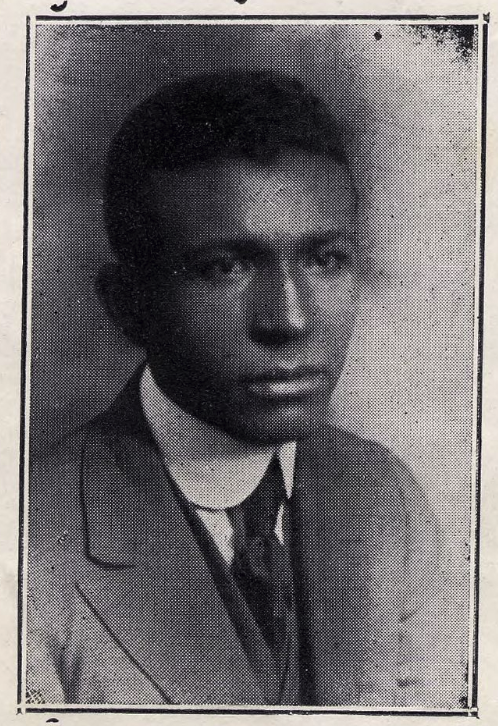
Thaxter, Celia (1835-1894). Celia Thaxter was born in New Hampshire, but spent much of her life in Maine, where her father owned the famous Appledore Hotel. At the age of 16, she married her father’s business partner, Levi Thaxter, and moved to Massachusetts. However, after years of unrest in their marriage, Thaxter decided to move back to Maine and work at her father’s hotel. During her time there, the hotel became a haven for a number of noted writers and artists. [MSK]
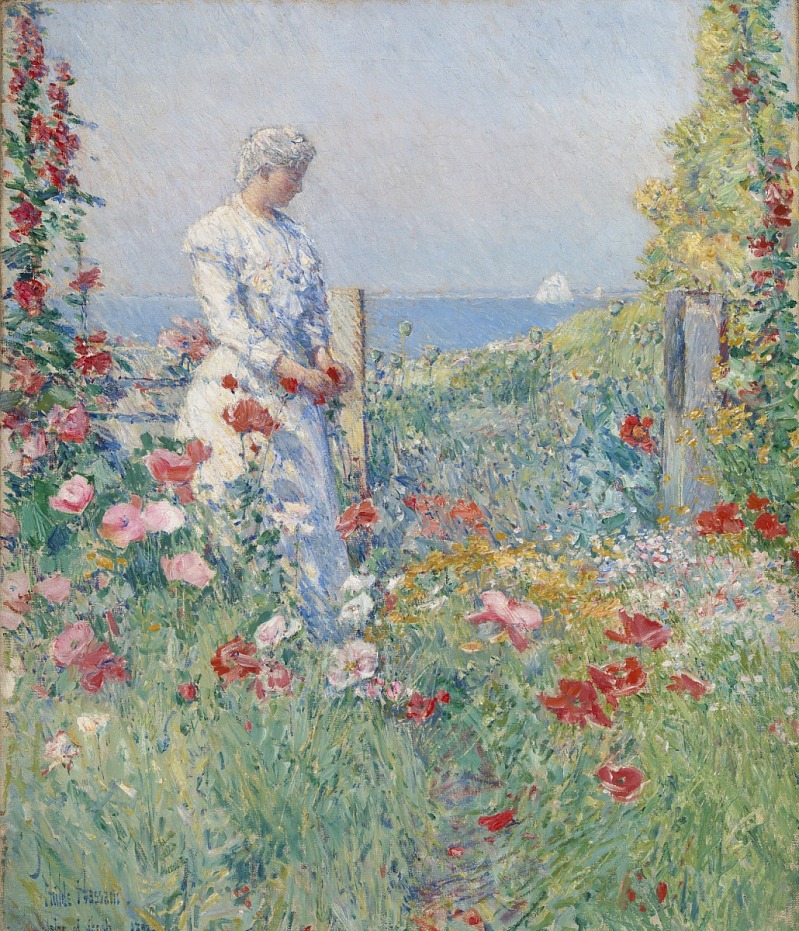
Thorne, Olive (1831-1918) See Harriet Mann Miller [KTB]
Todd, John (1800-1873). John Todd was orphaned as a young child, and although poor, was determined to get a college education and make something of himself. He graduated from Yale College in 1822, and thereafter attended Andover Seminary. In 1827 he was ordained first pastor of the Union Church in Groton Massachusetts. Subsequently he earned a doctorate in divinity from Williams College and became a trustee of that institution. He was remarkably successful as a pastor, and as an author. He published over thirty volumes, besides many sermons and pamphlets. His most widely known book, The Student’s Manual, was first published in 1835.

John Todd: The Story of His Life Told Mainly by Himself, page 2.
Townsend, Elizabeth W. (?) Little is known about Elizabeth W. Townsend. She was was born in Philadelphia as Elizabeth W. Haydock, and her only notable publication was The White Dove, and Other Poems for Children. She was married in 1826 to Elisha Townsend, a well-respected dentist from a Quaker family. [KTB]
Troyer, Carlos (1837-1920) was born Charles Troyer in Frankfurt, Germany. As an adult, he immigrated to the San Francisco area, working as a pianist, voice coach, and composer. In the 1880s, he began using the names Carlos. Troyer was best known for this musical arrangements of traditional Native American songs. [JC]
W
Webb, Doris (1885-1967). Webb was born in Brooklyn, New York. She was a member of the St. Nicholas League and had at least two poems published in St. Nicholas Magazine. As an adult, Webb wrote poetry for Lippincott’s Monthly Magazine. She also wrote literature reviews for Publisher’s Weekly with Doris Webb Webster’s byline, her married name. With her husband, she co-authored the novel Uncle James’ Shoes. [MM]
Wells, Amos Russel (1862 – 1933) was an American author of prose and poetry, an academic, and an editor. He graduated from Antioch College in 1883 and taught Greek and geology there from 1883 to 1891. After that, he became editor and publisher of two magazines Christian Endeavor and Golden Rule.
He was a prolific author. Many of his books provided Christian guidance for young people and were used as Sunday School textbooks. He also wrote juvenile fiction, poetry, and devotional literature. [MM]
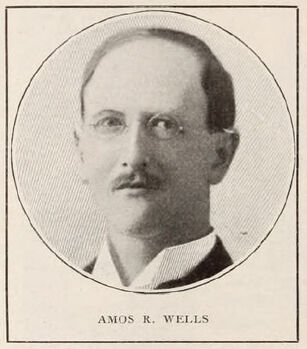
Whittier, John Greenleaf (1807 – 1892). Author and abolitionist noted for his journalism and his poetry, sketches, and tales of rural New England life. Whittier’s strong Quaker faith found its expression in his support of humanitarian causes, and he edited newspapers while continuing to write verse. He was a founding contributor of the influential magazine Atlantic Monthly, publishing today as The Atlantic. [CH]
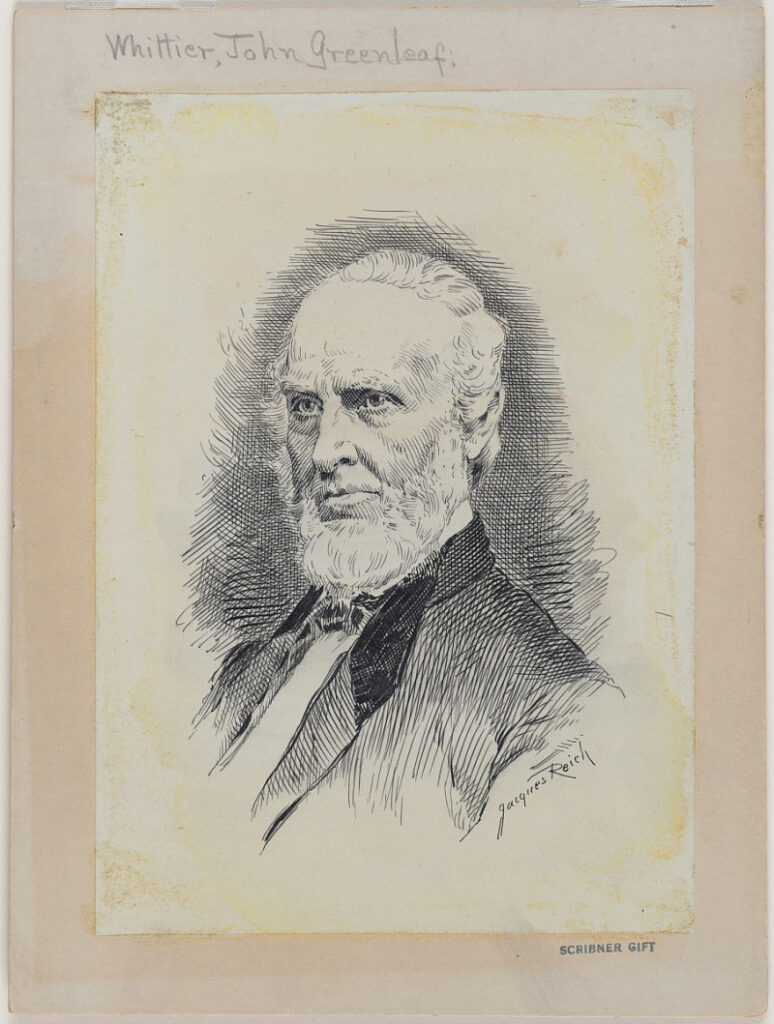
c 1899-1920
Williams, Margery (1881-1944). Margery Williams is most well known for her first book The Velveteen Rabbit or How Toys Become Real. She was born in London, England, and moved to the United States at the age of nine, after the death of her father. Her father left a lasting impact on her life, teaching her to read early. As an adult, she spent many years living in England, France, and Italy with her husband and two children, before settling back in New York, New York in 1921. She wrote many other books for children and adults including The Little Wooden Doll (1925), which was illustrated by her daughter, Pamela. Her book Winterbound was a 1937 Newberry Medal Honoree. [IM]

Withers, Sarah (?). Aside from her part in writing several Readers for Johnson Publishing House with Hetty S. Brown and William Knox Tate, nothing is known of Sarah Withers. She may have been the mother of U.S. Senator and Secretary of War Stephen Benton Elkins. [IM]
Wright, Julia McNair (1840-1903). Wright began her career as a writer at the tender age of sixteen with the publication of short stories, though she also published several novels, nature readers, and domestic guidebooks throughout her life. Wright’s works were so popular that her stories were republished and translated for readership in several countries, including Arabia. An ardent Protestant and traditionalist, Wright’s work frequently features anti-Catholic themes and conservative gender politics, even as her stories frequently centered women’s struggles and desires. [KTB]
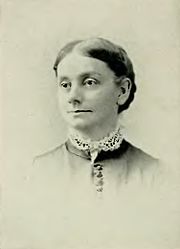
Z
Zitkála-Šá (1876-1938), also known as Gertrude Simmons Bonnin, was a Yankton Nakota writer, editor, activist, educator, and musician. She is arguably one of the best known Native writers of the late 19th and early 20th centuries, publishing works in many genres. Her works include autobiographical narratives, speeches and political arguments, and even songs for the The Sun Dance Opera, on which she collaborated with William H. Hanson, creating the first-ever opera by a Native writer. Throughout her life, she argued for Native sovereignty, civil rights, and increased access to education and healthcare for Native peoples. [JC]

